Our Sire Jack At 8 weeks old.Below, Scout and Rock |
Seed TicksAdult Tick larvae are commonly referred to as seed ticks. Larvae hatch from the eggs laid by an adult female tick and are rarely seen unless in large groupings because they are so tiny, resembling poppy seeds with six legs. While the number of eggs deposited by females varies, often times eggs laid by one female at one time may number into the hundreds. Therefore, usually seed ticks on a dog equates to a very large number at one time, rather than just a few.
|
|
Heartworms
Link for Heartgard Plus preventative against Heartworms. Treats and controls 3 species of hookworms and 2 species of roundworms. Kills heartworms in the larvae stage. This requires a prescription approval from your Veterinarian.
Brucellosis - Brucellosis is a contagious disease caused by the bacterium Brucella canis. It is one of the leading causes of infertility in breeding stock. It occurs worldwide and affects all kinds of dogs, purebred and not, and it can also be transmitted from dogs to humans. Other animals that can also be affected with Brucellosis include livestock such as sheep, cattle, and goats, along with wildlife such as wild pigs, elk, and bison.
This website is best viewed on a PC.
INGREDIENTS IN PET FOOD
By-Products - (PETMD by-product) aka Also described as the 5 D's aka 5-D meat:
Dead, Diseased, Dying, Decayed, and Drugged animals.
For example, chicken by-products or beef by-products: clean, and non-rendered "parts", other than meat, derived from slaughtered animals. This includes, but not limited to the lungs, spleen, kidneys, brain, blood, bone, roadkill, fatty tissue, and stomachs and intestines freed of their contents, Dead zoo and shelter animals. This is a cheap way for pet food companies to keep the protein levels high (not high quality) while keeping food production costs down.
*Preservatives - There are many ingredients including chemicals in foods. If you are unsure of something research it. Avoid foods with a copious amount of preservatives, chemicals, and unknown ingredients.
Dry or Canned Dog Foods, Raw Diet or Home Cooked - There are pros and cons with the food options above. We selectively choose our dogs' diets based on what is best for their needs (age/activity level), and not what's more convenient or the cheapest.
Dry Dog Food - Most popular choice, economical, hard dog chow helps in keeping your dogs' teeth cleaner, predictable nutrition analysis, convenient, potential recalls. This is what we feed ours and recommend.
Raw - Gaining in popularity, it's the least practical and generally quite costly, having good quality ingredients. Be aware your dog is getting a complete diet of required nutrients. This diet can be unsanitary or pose a risk to those with a weakened immune system. Potential for recalls from raw food companies. From our research, we believe raw feeding is a very good supplement however, we wouldn't advocate an absolute raw diet without first consulting a lic. veterinarian to ensure it covers all the dogs' dietary needs. Also, making sure that the diet can be maintained consistently (In regards to traveling/boarding, etc.) Just tossing the raw meat into their bowl and expecting it to cover your dogs needs nutritionally is not satisfactory. Consult your vet, research about all of the aspects of a raw diet.
Canned Dog Food - May cause a "finicky eater," less economical, convenient. It can lead to tooth decay, predictable nutrition analysis, and potential recalls.
Home Cooked - May cause your dog to "hold out" from eating their regular dog food. It is less economical and convenient, can lead to tooth decay, good quality control of ingredients. If your dog gets sick or an upset stomach, feeding plain cooked chicken and rice can be beneficial.
Educate yourself on learning to read your dog food bag, its ingredients and order listed.
Macros - "Macronutrients are what make up the caloric content of a food," The three categories of macronutrients: carbohydrates, protein, and fat. The caloric combination of the macros is where those mysterious total number of calories is from.
BASICS of DOG FOOD INGREDIENTS:
*Grain Free - Some dogs can be sensitive to a grain filled diet. Usually, it consists of cheap food fillers, corn, and grains.
*Protein Source - Ingredients are in order from the highest quantity to lowest. The first ingredients should be a quality and identifiable protein from a quality source.
*Proper protein, fat, carbs, and fiber ratios - Overall macros is important to maintain weight, condition, energy level and growth.
*Dyes - Avoid foods with heavy chemical dyes.
*Fruits and Vegetables - Certain fruits and vegetable ingredients can be beneficial. Do your research. See our BLOG on (DANGEROUS TREATS).
Chicken meal - Chicken meal is considered to be a meat concentrate which contains nearly 300% more protein than fresh chicken.
SIGNS FOR AWARENESS:
*Coat should be odorless with minimal shedding and shiny. A dull coat and an unusual amount of shedding can indicate signs of a deficiency in nutrition.
*Dog likes it. Some dogs just don't like certain foods (taste, size, texture, and scent).
*Dogs overall vigor and demeanor.
*Vomiting - Your dog should not vomit from new food. If they do most likely something's probably wrong. Your dog could be allergic to something in the ingredients or it may not be the food at all. Check into it with your veterinarian ASAP and have the bag ready to make them aware of the brand/ingredients from that particular dog food.
*Bowel Movements (Large stool). It is normal for soft stool while transitioning your pet slowly to a new food over a 12-14 day period. However, after 7-15 days on the new food, their stool should be firm and regular.
*Weight. Your dog should maintain a healthy weight. If they are over or underweight, things may need adjusting but the food could have inadequate macro ratios for their specific metabolism. Consult your veterinarian for professional advice.
*See Puppy Supply Basics for Puppy Toys, Food, Crate, and Items We Use*
Dead, Diseased, Dying, Decayed, and Drugged animals.
For example, chicken by-products or beef by-products: clean, and non-rendered "parts", other than meat, derived from slaughtered animals. This includes, but not limited to the lungs, spleen, kidneys, brain, blood, bone, roadkill, fatty tissue, and stomachs and intestines freed of their contents, Dead zoo and shelter animals. This is a cheap way for pet food companies to keep the protein levels high (not high quality) while keeping food production costs down.
*Preservatives - There are many ingredients including chemicals in foods. If you are unsure of something research it. Avoid foods with a copious amount of preservatives, chemicals, and unknown ingredients.
Dry or Canned Dog Foods, Raw Diet or Home Cooked - There are pros and cons with the food options above. We selectively choose our dogs' diets based on what is best for their needs (age/activity level), and not what's more convenient or the cheapest.
Dry Dog Food - Most popular choice, economical, hard dog chow helps in keeping your dogs' teeth cleaner, predictable nutrition analysis, convenient, potential recalls. This is what we feed ours and recommend.
Raw - Gaining in popularity, it's the least practical and generally quite costly, having good quality ingredients. Be aware your dog is getting a complete diet of required nutrients. This diet can be unsanitary or pose a risk to those with a weakened immune system. Potential for recalls from raw food companies. From our research, we believe raw feeding is a very good supplement however, we wouldn't advocate an absolute raw diet without first consulting a lic. veterinarian to ensure it covers all the dogs' dietary needs. Also, making sure that the diet can be maintained consistently (In regards to traveling/boarding, etc.) Just tossing the raw meat into their bowl and expecting it to cover your dogs needs nutritionally is not satisfactory. Consult your vet, research about all of the aspects of a raw diet.
Canned Dog Food - May cause a "finicky eater," less economical, convenient. It can lead to tooth decay, predictable nutrition analysis, and potential recalls.
Home Cooked - May cause your dog to "hold out" from eating their regular dog food. It is less economical and convenient, can lead to tooth decay, good quality control of ingredients. If your dog gets sick or an upset stomach, feeding plain cooked chicken and rice can be beneficial.
Educate yourself on learning to read your dog food bag, its ingredients and order listed.
Macros - "Macronutrients are what make up the caloric content of a food," The three categories of macronutrients: carbohydrates, protein, and fat. The caloric combination of the macros is where those mysterious total number of calories is from.
BASICS of DOG FOOD INGREDIENTS:
*Grain Free - Some dogs can be sensitive to a grain filled diet. Usually, it consists of cheap food fillers, corn, and grains.
*Protein Source - Ingredients are in order from the highest quantity to lowest. The first ingredients should be a quality and identifiable protein from a quality source.
*Proper protein, fat, carbs, and fiber ratios - Overall macros is important to maintain weight, condition, energy level and growth.
*Dyes - Avoid foods with heavy chemical dyes.
*Fruits and Vegetables - Certain fruits and vegetable ingredients can be beneficial. Do your research. See our BLOG on (DANGEROUS TREATS).
Chicken meal - Chicken meal is considered to be a meat concentrate which contains nearly 300% more protein than fresh chicken.
SIGNS FOR AWARENESS:
*Coat should be odorless with minimal shedding and shiny. A dull coat and an unusual amount of shedding can indicate signs of a deficiency in nutrition.
*Dog likes it. Some dogs just don't like certain foods (taste, size, texture, and scent).
*Dogs overall vigor and demeanor.
*Vomiting - Your dog should not vomit from new food. If they do most likely something's probably wrong. Your dog could be allergic to something in the ingredients or it may not be the food at all. Check into it with your veterinarian ASAP and have the bag ready to make them aware of the brand/ingredients from that particular dog food.
*Bowel Movements (Large stool). It is normal for soft stool while transitioning your pet slowly to a new food over a 12-14 day period. However, after 7-15 days on the new food, their stool should be firm and regular.
*Weight. Your dog should maintain a healthy weight. If they are over or underweight, things may need adjusting but the food could have inadequate macro ratios for their specific metabolism. Consult your veterinarian for professional advice.
*See Puppy Supply Basics for Puppy Toys, Food, Crate, and Items We Use*
Here's a link to two sites that we really like: Unusual Southern Names, and Double Names. There is a long list of what we think, are some great name options of the "Deep South," if you want to name your new fur baby one that's indicative to their Southern heritage. We personally like naming our dogs in this way. We hope this helps give you some ideas and inspiration!
There are many types of "drives" - Prey, Play, and Pack, Etc.
Drive - Is an inherent, unconscious desire that pushes the dog into taking action in relation to something. All dogs have certain basic drives. Sometimes, a dog with a lot of drive is referred to as being "hot." Rarely does one inborn trait exist without the influence of another alongside that behavior. There are several “drives" that can exist with a diversity of intensities. For training aspects, some drives are desirable and some are not. Dogs have certain basic drives, each drive is linked to a dog's survival. For example, to survive out in the wild a dog must have the desire and ability to seize and kill its prey. For our breeding program we like dogs with strong nerves, and a lot of energy where these drives can be channeled and focused along with sound and discerning qualities. As per the breeds character traits.
Favorable drives are effective only when coupled with strong nerves and the correct thresholds.
*Prey Drive - Prey drive refers to a dog's inherent desire to chase, catch and kill prey. This natural trait outlines the foundation for a large variety of dog jobs. High prey driven dogs will chase a ball without end, and continue to hunt relentlessly for it if it goes out of view. Many times, these strong prey driven traits can be used for working.
*Play Drive - Is a dog's desire for physical contact with the family, trainer, and/or other dogs. This behavior is more commonly observed in puppyhood and can follow throughout their lifetime. When puppies are wanting to play, they display a particular gesture known as the Beckhov’s Bow. Once a puppy bows and the other responds in a playful nature, it's understood by both as only being play. This drive can be used for motivating many forms of training.
*Pack Drive - A higher ranked, pack driven dog is easier to train in obedience than the more standoffish dog. The dog believes it's more important to please the pack rather than pleasing themselves. This desire is to be socially connected with the pack members, it's the state of mind in the social drives, the dog seeking the companionship of others. They want to hang out with their owner, other people, and dogs. In higher levels, this type of dog would follow you everywhere, be underfoot and be waiting outside the door for you to come out. The overly dependent dog is going to become fixated on "where's my owner," falling out of drive. Nerves are also a factor here. Higher pack driven dogs are more trainable due to their fear of rejection, and getting expelled from their "pack."
*Rank Drive - Is a dogs desire to improve their social status in the "Pack." Dogs that are higher in rank drive will attempt to establish the highest position. More independent dogs tend to also be higher in rank drive. Some dogs will fight to the death to achieve the "top" position with other dogs, but also be totally submissive to humans and accept their leadership without a challenge. You will observe a wide range among dogs' behaviors. Some will challenge and constantly test you for the "superior" position while also displaying aggression.
*Guard Drive - This is used to defend territory and/or prey by barking and growling. If these warnings do not work, then a defensive bite could follow. This behavior is only exhibited under specific conditions and is territorial in nature. Other drives contribute to various degrees of intensities.
*Protection Drive - This is to protect the pack leader and the other members. This drive is displayed when either a real or imagined threat is perceived. A subtle sign of this is when a dog gets between their owner and a stranger while remaining on guard. An extreme case is when a dog engages a threatening individual with absolutely no protection training. This behavior is much rarer than people would think.
*Survival Drive - This could be a problem depending on both strength of the drive and the length of time it takes to be displayed. It refers to the dog's instinct to defend itself. It's part of the self- preservation instinct and is motivated by fear brought on by a real or imagined threat. It's exhibited as “fight or flight," also known as “defense or avoidance.” When a dog's in defense drive, it's displaying aggressive behaviors. Their hackles might be up, the dog might be barking, growling, lunging, and snapping as an attempt to convince the threat to stay away. This dog feels it must fight for it's life. A dog in defense drive is under acute anxiety, with possible feelings of uncertainty. You will witness ears moving to-and-fro, the dog may bark and back up, and step forward again. If the dog goes into defense, it will attempt to avoid the threat by a swift, intense attack, then retreat before an injury is sustained. In avoidance mode, it will simply try to escape. The dog will exhibit body language that is intended to increase its size, and therefore, its ability to threaten, like turning sideways with its hair up. If a dog's on a leash and begins to go into "fight or flight" mode, it will invariably go into "defense or fight" because the leash has inhibited the flight opportunity.
Note: the next time someone tells you that their growling and lunging dog is being "protective," that protection by its very description, demands the presence of a genuine and discernible threat. If the dog is carrying on defensively toward a non-threatening person/object, that is a frightened dog, not protection.
*Hardness - This trait is both psychological and physiological. It is a physical and/or mental resiliency towards unpleasant experiences. Hardness is best understood when compared to a pain threshold. A dog with a huge level of hardness can take an immense amount of pain and stress with minimal prolonged, negative effects. This type of dog requires stronger corrections when defiant. Physiologically, hardness is in direct relation to the thickness of the sheathing around the nerve fibers in a dog’s body; the thicker the sheathing, then the harder the dog. Highly excitable levels in a hard dog will increase its hardness where corrections may become totally ineffective.
*Softness - Softness is the opposite of hardness and is the natural state of the wild dog. Nature has dictated softness as a survival trait. The soft dog perceives pain and stress more extremely than the average dog. A dog with a high level of softness often associates the location where it was exposed to a painful and/or stressful experience. It may never go back to that particular area. For example, if a soft dog stepped on a hornet and got stung, it might avoid that spot in the yard for hours, possibly days before the effects wear off.
*Trainability - Trainability is a psychological character trait and is generally seen in one of two ways. The first is the spontaneous attempt to perform the will of its pack leader/handler. The second is the number of behaviors the dog can be taught. Trainability can be described as a desire to be obedient and a willingness to learn new things.
*Pup Playing Games - This drive is demonstrated when dogs stalk and pounce on imaginary prey such as sticks, leaves, and rocks. They'll pick up objects and shake them, then carry them around very proudly. Other examples are “I’ll chase you, then you chase me,” and tug games which can be used to motivate obedience.
*Pup Guarding - In Puppy Guard Drive, a dog will get a prey object and taunt another dog with it in order to initiate play, and then make a big deal out of ferociously guarding that object. All of these mock-drives prepare a dog for adulthood by allowing the puppy to experience these behaviors.
*Pup Fighting - To many, rough play can sometimes be perceived as aggression when it's really just Puppy Fight Drive. Dogs prepare themselves for potential future battles by wrestling, biting and roughhousing around when they're young. They learn to leap, tumble, and divert while also gaining valuable social, and physical skills such as controlling the force of their biting as well as their aggression.
Drive - Is an inherent, unconscious desire that pushes the dog into taking action in relation to something. All dogs have certain basic drives. Sometimes, a dog with a lot of drive is referred to as being "hot." Rarely does one inborn trait exist without the influence of another alongside that behavior. There are several “drives" that can exist with a diversity of intensities. For training aspects, some drives are desirable and some are not. Dogs have certain basic drives, each drive is linked to a dog's survival. For example, to survive out in the wild a dog must have the desire and ability to seize and kill its prey. For our breeding program we like dogs with strong nerves, and a lot of energy where these drives can be channeled and focused along with sound and discerning qualities. As per the breeds character traits.
Favorable drives are effective only when coupled with strong nerves and the correct thresholds.
*Prey Drive - Prey drive refers to a dog's inherent desire to chase, catch and kill prey. This natural trait outlines the foundation for a large variety of dog jobs. High prey driven dogs will chase a ball without end, and continue to hunt relentlessly for it if it goes out of view. Many times, these strong prey driven traits can be used for working.
*Play Drive - Is a dog's desire for physical contact with the family, trainer, and/or other dogs. This behavior is more commonly observed in puppyhood and can follow throughout their lifetime. When puppies are wanting to play, they display a particular gesture known as the Beckhov’s Bow. Once a puppy bows and the other responds in a playful nature, it's understood by both as only being play. This drive can be used for motivating many forms of training.
*Pack Drive - A higher ranked, pack driven dog is easier to train in obedience than the more standoffish dog. The dog believes it's more important to please the pack rather than pleasing themselves. This desire is to be socially connected with the pack members, it's the state of mind in the social drives, the dog seeking the companionship of others. They want to hang out with their owner, other people, and dogs. In higher levels, this type of dog would follow you everywhere, be underfoot and be waiting outside the door for you to come out. The overly dependent dog is going to become fixated on "where's my owner," falling out of drive. Nerves are also a factor here. Higher pack driven dogs are more trainable due to their fear of rejection, and getting expelled from their "pack."
*Rank Drive - Is a dogs desire to improve their social status in the "Pack." Dogs that are higher in rank drive will attempt to establish the highest position. More independent dogs tend to also be higher in rank drive. Some dogs will fight to the death to achieve the "top" position with other dogs, but also be totally submissive to humans and accept their leadership without a challenge. You will observe a wide range among dogs' behaviors. Some will challenge and constantly test you for the "superior" position while also displaying aggression.
*Guard Drive - This is used to defend territory and/or prey by barking and growling. If these warnings do not work, then a defensive bite could follow. This behavior is only exhibited under specific conditions and is territorial in nature. Other drives contribute to various degrees of intensities.
*Protection Drive - This is to protect the pack leader and the other members. This drive is displayed when either a real or imagined threat is perceived. A subtle sign of this is when a dog gets between their owner and a stranger while remaining on guard. An extreme case is when a dog engages a threatening individual with absolutely no protection training. This behavior is much rarer than people would think.
*Survival Drive - This could be a problem depending on both strength of the drive and the length of time it takes to be displayed. It refers to the dog's instinct to defend itself. It's part of the self- preservation instinct and is motivated by fear brought on by a real or imagined threat. It's exhibited as “fight or flight," also known as “defense or avoidance.” When a dog's in defense drive, it's displaying aggressive behaviors. Their hackles might be up, the dog might be barking, growling, lunging, and snapping as an attempt to convince the threat to stay away. This dog feels it must fight for it's life. A dog in defense drive is under acute anxiety, with possible feelings of uncertainty. You will witness ears moving to-and-fro, the dog may bark and back up, and step forward again. If the dog goes into defense, it will attempt to avoid the threat by a swift, intense attack, then retreat before an injury is sustained. In avoidance mode, it will simply try to escape. The dog will exhibit body language that is intended to increase its size, and therefore, its ability to threaten, like turning sideways with its hair up. If a dog's on a leash and begins to go into "fight or flight" mode, it will invariably go into "defense or fight" because the leash has inhibited the flight opportunity.
Note: the next time someone tells you that their growling and lunging dog is being "protective," that protection by its very description, demands the presence of a genuine and discernible threat. If the dog is carrying on defensively toward a non-threatening person/object, that is a frightened dog, not protection.
*Hardness - This trait is both psychological and physiological. It is a physical and/or mental resiliency towards unpleasant experiences. Hardness is best understood when compared to a pain threshold. A dog with a huge level of hardness can take an immense amount of pain and stress with minimal prolonged, negative effects. This type of dog requires stronger corrections when defiant. Physiologically, hardness is in direct relation to the thickness of the sheathing around the nerve fibers in a dog’s body; the thicker the sheathing, then the harder the dog. Highly excitable levels in a hard dog will increase its hardness where corrections may become totally ineffective.
*Softness - Softness is the opposite of hardness and is the natural state of the wild dog. Nature has dictated softness as a survival trait. The soft dog perceives pain and stress more extremely than the average dog. A dog with a high level of softness often associates the location where it was exposed to a painful and/or stressful experience. It may never go back to that particular area. For example, if a soft dog stepped on a hornet and got stung, it might avoid that spot in the yard for hours, possibly days before the effects wear off.
*Trainability - Trainability is a psychological character trait and is generally seen in one of two ways. The first is the spontaneous attempt to perform the will of its pack leader/handler. The second is the number of behaviors the dog can be taught. Trainability can be described as a desire to be obedient and a willingness to learn new things.
*Pup Playing Games - This drive is demonstrated when dogs stalk and pounce on imaginary prey such as sticks, leaves, and rocks. They'll pick up objects and shake them, then carry them around very proudly. Other examples are “I’ll chase you, then you chase me,” and tug games which can be used to motivate obedience.
*Pup Guarding - In Puppy Guard Drive, a dog will get a prey object and taunt another dog with it in order to initiate play, and then make a big deal out of ferociously guarding that object. All of these mock-drives prepare a dog for adulthood by allowing the puppy to experience these behaviors.
*Pup Fighting - To many, rough play can sometimes be perceived as aggression when it's really just Puppy Fight Drive. Dogs prepare themselves for potential future battles by wrestling, biting and roughhousing around when they're young. They learn to leap, tumble, and divert while also gaining valuable social, and physical skills such as controlling the force of their biting as well as their aggression.
This website is best viewed on a PC.
SPECIAL ALAPAHA QUALITIES
Of the many endearing qualities that make an Alapaha so special, such as their loving and affectionate demeanor towards its people and other comrades they may share their home with, along with their goofy antics and having a playful nature just to name a few. However, aggression is not one of them! They possess the ability to read a situation before reacting, having the mental capacity to approach any given circumstance in a calm manner, and the awareness to settle if a would-be threat ends up being one of your children's friends, for instance. It's these attributes that make them an excellent guard dog with a stable temperament and not a liability.
To us, They're just a loving puppy in a big dogs body that wants nothing more than our affection and approval. When we let them, they will gladly climb onto one of our laps, given having a 75 - 90+ pound dog in our lap isn't the easiest feat to achieve depending on who it is, lol! No matter what the task is at hand, they are always alert to their surroundings and very protective, keeping a watchful eye.
To us, They're just a loving puppy in a big dogs body that wants nothing more than our affection and approval. When we let them, they will gladly climb onto one of our laps, given having a 75 - 90+ pound dog in our lap isn't the easiest feat to achieve depending on who it is, lol! No matter what the task is at hand, they are always alert to their surroundings and very protective, keeping a watchful eye.
Jack's silly side, lol!
They love the attention from our kids' friends!
This website is best viewed on a PC.
WHICH TYPE CRATE & SAFE BEDDING SHOULD I USE?
Since a puppy hasn't developed control over their bowel and bladder, they need potty breaks frequently! With ours during the mornings, they would have to poo and pee at least 3 times between 5 a.m. and noon. Puppies under the age of 6 months shouldn't be left in their crate longer than 3 or 4 hours each time. On average, a puppy can "hold it" for about an hour per every month of age. For example, a 2-month-old puppy can usually wait 2 hours to relieve their bladder. A full grown dog will generally need to pee between 3 to 5 times daily.
***SeePuppy Supply Basics For the Items Described On Our Page***
***SeePuppy Supply Basics For the Items Described On Our Page***
BEDDING WE USE AND SUGGEST-
Using a crate in the early stages of your puppy's development helps in keeping them safe when you can't watch them and see what they're up to. Puppies love to explore and pick up whatever they can with their mouths! It also helps in keeping them out of mischief, having unwanted accidents all over the house and from developing any undesirable behaviors which aren't fun for anyone and can become stressful for both you and your new addition. That being said, We really like the 42" or 48" inch size metal crate with the double doors, and comes with a divider because it's perfect for a full grown Alapaha to be comfortable, and have plenty of room to lie down and relax. Having the double doors gives more options as to where it can be placed in our home as well. The divider allows for adjustment to grow with a puppy, and it helps in training them to "hold it" until they are housebroken which in that instance, you would disregard using the divider altogether. But until then, you should place the divider where it gives just enough room for your new puppy to turn around and lay down. The first tendency your puppy will have when they feel the need to potty, will be to go to the other end of their crate to do their "business" if allowed. Naturally, dogs do not like to "go" in their "Den" so having this divider makes it ideal for potty training. We personally don't use Pee-Pads during their potty training, as those end up becoming a dangerous, shredded play toy. We also train using the Potty-Bells which cuts down on all the guess-work, so when our dogs have to "go," they ring those bells, and let us know it.
Make sure the crate latch is an "L" shape or it could eventually slide out of place, and your fur baby will be on the loose!
With our research, we like using the raised feeders with ours and we personally, have never experienced any issues with bloat in our dogs.
Read "Raised Feeder Bowls" Benefits/Risks?
By 2-3 months of age, your new puppy should be able to eat/drink directly out of the bowls in their raised stand.
Read "Raised Feeder Bowls" Benefits/Risks?
By 2-3 months of age, your new puppy should be able to eat/drink directly out of the bowls in their raised stand.
Slime In Your Dogs Water Bowl?
We suggest washing your dogs food and water bowls every one to two days using the coarse side of a sponge and hot soapy water, then rinsing well until no more suds are visible.
Biofilm needs to be physically broken up in order to be removed. Use the coarse side of a two-sided sponge to break it down, and then put the bowls in the dishwasher which is safer and more effective because the heat is antimicrobial. For a more natural cleanser, you can combine equal parts of baking soda, table salt, and hot water. If washing by hand scrub with hot soapy water, then rinse. Make sure you do not use the same sponge to wash your dishes or counters.
To really disinfect, mix a solution of one tablespoon bleach to one gallon of water and submerge the bowls into the solution to soak for about 3 minutes, and rinsing well to remove any bleach residue which is toxic to your pets. You also can use a bleach solution on ceramic, glass, plastic and stainless steel dishes but not aluminum which will rust.
A word of caution if using plastic feeders, they can sometimes cause an allergic reaction to your pets muzzle or chin area, causing a breakout similar to acne!
To really disinfect, mix a solution of one tablespoon bleach to one gallon of water and submerge the bowls into the solution to soak for about 3 minutes, and rinsing well to remove any bleach residue which is toxic to your pets. You also can use a bleach solution on ceramic, glass, plastic and stainless steel dishes but not aluminum which will rust.
A word of caution if using plastic feeders, they can sometimes cause an allergic reaction to your pets muzzle or chin area, causing a breakout similar to acne!
This website is best viewed on a PC.
***WARNING! Mid America Pet Food has voluntarily recalled all the pet food brands it manufactured with a best by date before 10/31/2024, which include Victor, Eagle Mountain, Wayne Feeds and two varieties of Member's Mark pet foods. These products include both dog and cat foods and were sold nationwide in retail stores and online.
CDC reports that, as of November 1, 2023, seven people infected with the strain of Salmonella have been reported from seven states (see map). Six of seven cases reported were in children one year of age or younger. Five of these cases reported exposure to dogs and three reported feeding Victor pet food to their pets.***
CDC reports that, as of November 1, 2023, seven people infected with the strain of Salmonella have been reported from seven states (see map). Six of seven cases reported were in children one year of age or younger. Five of these cases reported exposure to dogs and three reported feeding Victor pet food to their pets.***
By three weeks of age we start introducing the puppies to moistened puppy kibble, along with still getting their mothers milk, and slowly tapering them off of her until they are completely weaned by seven weeks of age. Upon reaching seven weeks they are eating dry puppy kibble specifically formulated for Large Breed Puppies, three times daily until they are full during each feeding. By eight weeks of age your puppy will start out eating approximately 1.5 to 2 cups with each of their three feedings. We feed a premium puppy kibble so there is no need for adding supplements to their diet. You always want to insure that your new Alapaha puppy has gotten their fill, and not sniffing around, licking at the bowl, searching for more! They will not overeat. This breed is not prone to bloating.
Underfeeding your puppy could lead to behavioral problems.
*By regulating their feedings, this also helps to make their bowel/bladder movements much more predictable, and aids with housebreaking.*
Make positive the puppy kibble has the Nutritional Adequacy Statement pictured below, set by the AAFCO Association of American Feed Control Officials for Large Breed Puppies. Read more on this topic- Rapid Growth Rate-Myths VS Facts
From our research we have decided to switch to these particular formulas/brands listed below for our dogs/puppies. All made in the USA. Diamond Naturals, and their Large Breed Puppy, Country Vet Naturals, and Beaverdam Pet Food brands. They are Non-GMO, free of by-products with zero artificial colors, flavors, preservatives, potatoes in any form, peas, lentils, legumes and gluten-free grains- No corn, wheat, soy.
We will switch up on occasion for variety with our adults, and only with AAFCO approved, comparable brands.
*The FDA warns against the possible link to DCM (Dilated Cardiomyopathy) in dogs fed a grain-free diet with Ingredients Containing - Potatoes in various forms, Lentils, Peas, and other legume seeds.* Read Article: FDA Investigation into Potential Link between Certain Diets and Canine Dilated Cardiomyopathy
*Our dogs are very active! We are fortunate enough to allow them hours of free play outdoors, where they play tug, run around chasing each other, and exploring the property, etc. Because of their high activity level we like to give our adult dogs free choice of dry kibble only, no wet food, as they are maintaining a consistent, healthy weight, and we will adjust this accordingly depending on age, and activity level down the road. Otherwise, we would suggest around One year of age with average to moderate activity feeding adult large breed dry dog food two times daily.
*Canned food can cause tooth decay over time*
Note: For training we will use their dog food, Cloud Star Tricky Trainers Crunchy Liver Flavor Treats, Freeze dried natural treats, and occasionally small pieces of raw or steamed cauliflower. No table scraps. Ice cubes are a favorite treat too they all come running when they hear that ice maker! See our blog on "Dangerous Treats".
Underfeeding your puppy could lead to behavioral problems.
*By regulating their feedings, this also helps to make their bowel/bladder movements much more predictable, and aids with housebreaking.*
Make positive the puppy kibble has the Nutritional Adequacy Statement pictured below, set by the AAFCO Association of American Feed Control Officials for Large Breed Puppies. Read more on this topic- Rapid Growth Rate-Myths VS Facts
From our research we have decided to switch to these particular formulas/brands listed below for our dogs/puppies. All made in the USA. Diamond Naturals, and their Large Breed Puppy, Country Vet Naturals, and Beaverdam Pet Food brands. They are Non-GMO, free of by-products with zero artificial colors, flavors, preservatives, potatoes in any form, peas, lentils, legumes and gluten-free grains- No corn, wheat, soy.
We will switch up on occasion for variety with our adults, and only with AAFCO approved, comparable brands.
*The FDA warns against the possible link to DCM (Dilated Cardiomyopathy) in dogs fed a grain-free diet with Ingredients Containing - Potatoes in various forms, Lentils, Peas, and other legume seeds.* Read Article: FDA Investigation into Potential Link between Certain Diets and Canine Dilated Cardiomyopathy
*Our dogs are very active! We are fortunate enough to allow them hours of free play outdoors, where they play tug, run around chasing each other, and exploring the property, etc. Because of their high activity level we like to give our adult dogs free choice of dry kibble only, no wet food, as they are maintaining a consistent, healthy weight, and we will adjust this accordingly depending on age, and activity level down the road. Otherwise, we would suggest around One year of age with average to moderate activity feeding adult large breed dry dog food two times daily.
*Canned food can cause tooth decay over time*
Note: For training we will use their dog food, Cloud Star Tricky Trainers Crunchy Liver Flavor Treats, Freeze dried natural treats, and occasionally small pieces of raw or steamed cauliflower. No table scraps. Ice cubes are a favorite treat too they all come running when they hear that ice maker! See our blog on "Dangerous Treats".
Pictured Below On the Bag We Feed Our Puppies
Nutritional Adequacy Statement
Nutritional Adequacy Statement
|
Diamond Naturals Large Breed Puppy Formula Dry Dog Food
Available Online: Chewy, Petco & Tractor Supply. For Puppies Only- Made In USA- Recipe made from pasture raised lamb with probiotics, Gluten-Free Grains, Non-GMO, No corn, wheat, soy, filler, artificial flavors, colors, by-products, preservatives, and no peas, lentils, legumes or potatoes. Puppies Only. 40# Bag
DIAMOIND NATURALS ADULT BEEF MEAL AND RICE FORMULA DRY KIBBLE.
Available Online: Chewy, Petco & Tractor Supply. Suggest Only Adults- Made In USA- Has Probiotics, and Free of corn, wheat, soy. Non-GMO, Gluten-Free Grains, No potatoes in any form, peas, lentils or legumes, artificial colors, flavors or by-products. 40# Bag
Country Vet Naturals 28/18 Healthy Puppy Dog Food. All Life Stages
For Puppies and Adults- Made In USA- Non-GMO, No corn, wheat, soy, and no potatoes, peas, lentils, legumes, fillers or artificial flavors, preservatives, dyes or by-products. 35# Bag |
Diamond Naturals Large Breed Adult Chicken & Rice Formula Dry Dog Food.
Available Online: Chewy, Petco & Tractor Supply. Suggest Only Adults - Made In USA- Has Probiotics, and Free of corn, wheat, soy. Non-GMO, Gluten-Free Grains, No potatoes in any form, peas, lentils or legumes, artificial colors, flavors or by-products. For Adult Dogs. 40# Bag
Diamond Naturals Chicken & Rice Formula Dry Dog Food. All Life Stages
Available Online: Chewy, Petco & Tractor Supply. Suggest Only Adults- Made In USA- Has Probiotics, and Free of corn, wheat, soy. Non-GMO, Gluten-Free Grains, No potatoes in any form, peas, lentils or legumes, artificial colors, flavors or by-products. 40# Bag
|
***See detailed Puppy Stages Progression Photos, Potty Training and Feeding***
|
|
This website is best viewed on a PC.
*Toys Mainly For Adult Alapaha's That Can Take A Chewing*
~See Puppy Supply Basics for Puppy Toys, Food, Crate and Items We Use~
Just a few toys we've found through our experience that can stand up to their chewing! This breed likes to chew. It's best in our opinion, to not give your puppy toys that look like shoes or items that you wouldn't actually want them chewing on. Puppies grow fast, and we suggest getting the largest size available for your new puppy at 8 weeks to adult. *We choose not giving our dogs rawhides/pig ears or knuckle bones, etc., for risk of being a choking hazard. Giving them these types of treats/chews, will almost always leads to them not being interested, and refusing the safer bones/antlers, and other types of toys, because they can not compete with those types of flavor basted chews, and bones. The types we use listed below, can last ours a long time.
We have not experienced any of our dogs breaking off or chipping their teeth with any of the toys we have suggested here.
This being a working breed, their mouth is like our hands and they LOVE to chew and carry things around. Ours like variety and these toys help keep them from boredom so they stay happy, and satisfied especially on their downtime.
*I like to add to this from time to time once I feel the toys are tried, and true from our experience with all of our dogs in our opinion!*
~See Puppy Supply Basics for Puppy Toys, Food, Crate and Items We Use~
Just a few toys we've found through our experience that can stand up to their chewing! This breed likes to chew. It's best in our opinion, to not give your puppy toys that look like shoes or items that you wouldn't actually want them chewing on. Puppies grow fast, and we suggest getting the largest size available for your new puppy at 8 weeks to adult. *We choose not giving our dogs rawhides/pig ears or knuckle bones, etc., for risk of being a choking hazard. Giving them these types of treats/chews, will almost always leads to them not being interested, and refusing the safer bones/antlers, and other types of toys, because they can not compete with those types of flavor basted chews, and bones. The types we use listed below, can last ours a long time.
We have not experienced any of our dogs breaking off or chipping their teeth with any of the toys we have suggested here.
This being a working breed, their mouth is like our hands and they LOVE to chew and carry things around. Ours like variety and these toys help keep them from boredom so they stay happy, and satisfied especially on their downtime.
*I like to add to this from time to time once I feel the toys are tried, and true from our experience with all of our dogs in our opinion!*
|
Jolly Pets Teaser Ball-
Any Size! (8 "pictured) Our dogs have yet to destroy this or puncture it! They like carrying it around too. Below: Leia, playing with the Teaser Ball.
Leia, pictured above.
Blinky Babble Ball - Medium or Large
This Babble Ball is loud, and obnoxious! BUT, our dogs love this thing! They have not cracked it. However, after about a month (with our 5 playing with it) It doesn't make all the sounds.
Chuckit! MAX GLOW-L/XL.
This particular "Chuckit! ball", and there are a few different ones, poses no threat of choking and glows in the dark. Our dogs absolutely love it! Jack walks around flexing his jaws on it, while it makes a funny popping noise with it being hollow and flexible with a hole on both ends, he seems to really like that, lol. As long as your puppy/adult does not begin to chew on the hole openings on either side, then it can be practically indestructible!
Jack, with the Glow Ball
Nylabone Power Chew XL Dog Chew Toys for Aggressive Chewers
This one is pretty tough! Nylabone Dura Chew Ring Chicken Flavor
|
Petstages Deer Horn Long Antler Lasting Chew-L.
This withstands their chewing and lasts for months with all of ours chewing it, as do the other types we've listed. When the bones get worn down where they could possibly swallow one, we throw them away. We also keep a spare in the car and in their crates.
This withstands their chewing and lasts for months with all of ours chewing it, as do the other types we've listed. When the bones get worn down where they could possibly swallow one, we throw them away. We also keep a spare in the car and in their crates.
Lexy and Jack
Nylabone Power Chew Galileo Chew Toy-L/XL
This is Super Durable!
This is Super Durable!
Pet Qwerks Dinosaur BarkBone Real Bacon Dog Chew Toy-XXL-XXXL
They LOVE This one, and lasts months with our pack of 5!
They LOVE This one, and lasts months with our pack of 5!
Lexy with the XXXL
Lexy
The Antler Box-Premium Elk Antler Dog Chews (1 lb Bulk Pack) -Both Whole and Split Antlers-Long Lasting Organic Chewing Toys Sourced from Naturally Shed Antlers in The USA
Elk Antlers have the most trace minerals.
We suggest sz L or XL
Elk Antlers have the most trace minerals.
We suggest sz L or XL
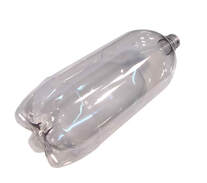
Plastic bottles without their caps or labels of course. They don't last long but they have a great time with them while it lasts, so keep an eye out for any signs of the plastic being punctured and then of course, THROW it away!
***See detailed Puppy Stages Progression Photos, Potty Training and Feeding***
This website is best viewed on a PC.
DOG TREATS AND DANGERS
TREATS: If you choose to buy any pet treats or foods made in China, you may be exposing your pet to serious danger. Some of the treats include: chicken jerky treats, chicken tenders, chicken strips, chicken treats and sweet potato treats. As a precaution, buy only food and treats made in the USA. Even though buying pet products made in the United States won’t eliminate all risk of ending up with tainted products, it can improve the chances of keeping your dog safe. Veterinarians are now reporting kidney problems linked to dogs consuming sweet potato and yam treats made in China. One of the types of rare kidney disorders is Fanconi’s Syndrome. If left untreated, Fanconi Syndrome can be fatal.
In 2007, the FDA become aware of an increasing number of ailments in pets associated from consuming Chinese produced jerky treats. Most of the complaints involved chicken jerky (treats, tenders and strips), but others include duck, sweet potato and treats where chicken or duck jerky is wrapped around dried fruits, sweet potatoes or yams. If your pet exhibits signs of distress after eating Chinese products, contact your veterinarian. It is advised that you save the treats and packaging for testing by the FDA to confirm or rule out if the product caused any disorder.
The FDA released a warning to dog owners informing them to avoid nonflavored and flavor basted dog bones. This was advised due to the fact of their potential harmful effects. Dog owners have reported that these bones caused gastrointestinal obstructions, blocked airways, internal bleeding, vomiting and diarrhea.
*Beware of Xylitol- Xylitol is reported to be 100 times more toxic to dogs than chocolate and causes an increase in insulin circulating through the dog's body. This may cause your dog's blood sugar to drop and lead to liver failure. Initial symptoms include vomiting, lethargy and loss of coordination. Eventually, the dog may have seizures and liver failure can occur within just a few days.
*Chocolate- Large amounts of chocolate and cocoa products can kill your dog. The toxic component found in chocolate is called Theobromine, which dog’s process much slower than humans and this causes a buildup of toxic levels in their system. Even just a small amount of chocolate, especially dark chocolate, can cause symptoms such as staggering, labored breathing, vomiting, diarrhea, tremors, fever, heart rate increase, abdominal pain, arrhythmia, seizures, coma and death. Chocolate also contains very toxic substances called methylxanthines, which are stimulants that stop a dog’s metabolic process. If your dog does ingest chocolate, contact a veterinarian and Pet Poison Helpline ASAP! The signs of sickness may not be visible for several hours even with death following within 24 hours!
*Cinnamon- While cinnamon is not actually toxic to dogs, it’s probably best to avoid it. Cinnamon and its oils can irritate the inside of dogs’ mouths, making them uncomfortable and sick. It can lower a dog’s blood sugar too much and can lead to diarrhea, vomiting, increased, or decreased heart rate and even liver disease. If they inhale it in powder form, cinnamon can cause difficulty breathing, coughing and choking.
*Eggs- Raw egg whites can give dogs biotin deficiency, so be sure to consult the advice of a licensed veterinarian before giving them or any food/treats to your pet you may be unsure about, for their health and safety.
*Fruits and Vegetables…Fruits- grapes, raisins, cranberries, persimmons, peaches and plums are especially dangerous treats for your dog. The problem with these fruits is the seeds and pits. Seeds from persimmons can cause inflammation of the small intestine and cause intestinal obstruction. Also, obstruction or choking is a possibility if a dog eats the pit from a peach or plum. More importantly, peach and plum pits contain cyanide which is poisonous to both humans and dogs. The difference is that humans know not to eat them. Dogs, unfortunately, do not. Other toxic human foods to dogs are onions, yeast dough, artificial sweeteners, avocados, alcohol and coffee.
*Macadamia Nuts- This is one of the most poisonous foods for dogs. They can cause vomiting, increased body temperature, inability to walk and lethargy. Even worse, they can affect the dogs' nervous system.
*Garlic- Like onions, chives, leeks and garlic, is part is five times more toxic to dogs than the rest of the Allium plants. Garlic can create anemia in dogs, causing side effects such as pale gums, elevated heart rate, weakness and collapse. Poisoning from garlic and onions may have delayed symptoms, so if you think your dog may have eaten some, contact your veterinarian.
*Ice Cream- Dogs do not digest dairy very well, and some dogs have a slight intolerance to lactose, a sugar found in milk products.
*Table Scraps- Feeding table scraps can cause many health issues for your pet. Feeding dogs scraps of food from the dinner table damages the health of pets as canine digestive systems cannot process food in the same way as humans. Dogs’ digestive systems cannot process food in the same way as humans, meaning certain foods normally classed as healthy could be toxic for a dog. Oily and fatty foods can lead to severe health problems such as diarrhea, vomiting and pancreatitis. Even worse, there are several people foods that are highly toxic to animals. Onions or any food prepared with them, for instance, can be unsafe for dogs and should never be given. Fat trimmings, cooked or uncooked can be an obvious cause of obesity in dogs. Fat trimmed from meat can cause pancreatitis. This can be painful and cause loss of appetite, lethargy, and dehydration. Feeding cooked bones to your dog such as leftover chicken or pork chop bones etc. is extremely risky as cooked bones can become a choking hazard and could splinter causing punctures and lacerations internally. Some dogs that are constantly fed with table scraps have the tendency to become dependent on them. Dogs that eat table scraps could start refusing to eat their regular dog food. Aside from that, feeding your pets the scraps can also cause undesirable behaviors such as the sneaking of food off of your plate while your back is turned. Granted, most dogs if given the chance will do this anyway unless they have been properly trained. However, if they already have a taste for it, this may encourage the behavior along with begging, which both can become very annoying.
Click on the highlighted word, "Dogs Health" and on the PET MD logo below, for more in-depth information on this topic.
In 2007, the FDA become aware of an increasing number of ailments in pets associated from consuming Chinese produced jerky treats. Most of the complaints involved chicken jerky (treats, tenders and strips), but others include duck, sweet potato and treats where chicken or duck jerky is wrapped around dried fruits, sweet potatoes or yams. If your pet exhibits signs of distress after eating Chinese products, contact your veterinarian. It is advised that you save the treats and packaging for testing by the FDA to confirm or rule out if the product caused any disorder.
The FDA released a warning to dog owners informing them to avoid nonflavored and flavor basted dog bones. This was advised due to the fact of their potential harmful effects. Dog owners have reported that these bones caused gastrointestinal obstructions, blocked airways, internal bleeding, vomiting and diarrhea.
*Beware of Xylitol- Xylitol is reported to be 100 times more toxic to dogs than chocolate and causes an increase in insulin circulating through the dog's body. This may cause your dog's blood sugar to drop and lead to liver failure. Initial symptoms include vomiting, lethargy and loss of coordination. Eventually, the dog may have seizures and liver failure can occur within just a few days.
*Chocolate- Large amounts of chocolate and cocoa products can kill your dog. The toxic component found in chocolate is called Theobromine, which dog’s process much slower than humans and this causes a buildup of toxic levels in their system. Even just a small amount of chocolate, especially dark chocolate, can cause symptoms such as staggering, labored breathing, vomiting, diarrhea, tremors, fever, heart rate increase, abdominal pain, arrhythmia, seizures, coma and death. Chocolate also contains very toxic substances called methylxanthines, which are stimulants that stop a dog’s metabolic process. If your dog does ingest chocolate, contact a veterinarian and Pet Poison Helpline ASAP! The signs of sickness may not be visible for several hours even with death following within 24 hours!
*Cinnamon- While cinnamon is not actually toxic to dogs, it’s probably best to avoid it. Cinnamon and its oils can irritate the inside of dogs’ mouths, making them uncomfortable and sick. It can lower a dog’s blood sugar too much and can lead to diarrhea, vomiting, increased, or decreased heart rate and even liver disease. If they inhale it in powder form, cinnamon can cause difficulty breathing, coughing and choking.
*Eggs- Raw egg whites can give dogs biotin deficiency, so be sure to consult the advice of a licensed veterinarian before giving them or any food/treats to your pet you may be unsure about, for their health and safety.
*Fruits and Vegetables…Fruits- grapes, raisins, cranberries, persimmons, peaches and plums are especially dangerous treats for your dog. The problem with these fruits is the seeds and pits. Seeds from persimmons can cause inflammation of the small intestine and cause intestinal obstruction. Also, obstruction or choking is a possibility if a dog eats the pit from a peach or plum. More importantly, peach and plum pits contain cyanide which is poisonous to both humans and dogs. The difference is that humans know not to eat them. Dogs, unfortunately, do not. Other toxic human foods to dogs are onions, yeast dough, artificial sweeteners, avocados, alcohol and coffee.
*Macadamia Nuts- This is one of the most poisonous foods for dogs. They can cause vomiting, increased body temperature, inability to walk and lethargy. Even worse, they can affect the dogs' nervous system.
*Garlic- Like onions, chives, leeks and garlic, is part is five times more toxic to dogs than the rest of the Allium plants. Garlic can create anemia in dogs, causing side effects such as pale gums, elevated heart rate, weakness and collapse. Poisoning from garlic and onions may have delayed symptoms, so if you think your dog may have eaten some, contact your veterinarian.
*Ice Cream- Dogs do not digest dairy very well, and some dogs have a slight intolerance to lactose, a sugar found in milk products.
*Table Scraps- Feeding table scraps can cause many health issues for your pet. Feeding dogs scraps of food from the dinner table damages the health of pets as canine digestive systems cannot process food in the same way as humans. Dogs’ digestive systems cannot process food in the same way as humans, meaning certain foods normally classed as healthy could be toxic for a dog. Oily and fatty foods can lead to severe health problems such as diarrhea, vomiting and pancreatitis. Even worse, there are several people foods that are highly toxic to animals. Onions or any food prepared with them, for instance, can be unsafe for dogs and should never be given. Fat trimmings, cooked or uncooked can be an obvious cause of obesity in dogs. Fat trimmed from meat can cause pancreatitis. This can be painful and cause loss of appetite, lethargy, and dehydration. Feeding cooked bones to your dog such as leftover chicken or pork chop bones etc. is extremely risky as cooked bones can become a choking hazard and could splinter causing punctures and lacerations internally. Some dogs that are constantly fed with table scraps have the tendency to become dependent on them. Dogs that eat table scraps could start refusing to eat their regular dog food. Aside from that, feeding your pets the scraps can also cause undesirable behaviors such as the sneaking of food off of your plate while your back is turned. Granted, most dogs if given the chance will do this anyway unless they have been properly trained. However, if they already have a taste for it, this may encourage the behavior along with begging, which both can become very annoying.
Click on the highlighted word, "Dogs Health" and on the PET MD logo below, for more in-depth information on this topic.
This website is best viewed on a PC.

There are so many poisonous plants out there, here is the link and the Top 10 Poisonous Plants to your pets!
This website is best viewed on a PC.
I wanted something unique. I thought Jack's coat looked similar to the color of moonshine. So, after doing a little searching, I came upon an article about moonshine. I found the legend behind the name to be very interesting! and that is how I came up with Jack's first name, Moonraker's.
: ) Thanks for reading!
Article Below:
: ) Thanks for reading!
Article Below:
MOONRAKER, MOUNTAIN DEW, MOONSHINE, OR WHITE
LIGHTNING? This article first appeared in the Coloradoan newspaper.
If it shed any light on the subject at all — and it doesn’t remotely — I might be tempted to elaborate on the actual term “moonshine,” and where it originated: i.e. rural England (circa 1780), when country smugglers hid illicit barrels of French brandy in shallow ponds in order to avoid the taxman but were discovered one fated summer night, when the moon shone down so brightly on the surface of the pond that it looked as if a wheel of cheese were floating there, and so these bootleggers told the taxmen that they were, in fact, raking the water not for contraband but for a creamy piece of that cheese.
This, however, is all rumor and rodomontade, easily sliced with an investigative blade.
It is in any case almost universally agreed that the term “moonshine” comes from the term “moonraker,” which in turn comes from this legend.
It is also generally agreed that moonshine — or white-lightning, if you prefer, or white-whiskey, or mountain dew — entered America in the early 1800’s, when Scots-Irish immigrants, who back home often made their whiskey without aging it, began settling the Appalachian region of America.
Yet the question remains: if many vodkas are essentially white whiskies, and if many whiskies made of corn mash are not moonshine, what, in the final analysis, is the distinguishing characteristic of moonshine?
The answer, it turns out, is this: illegality.
Moonshine, notorious for its high proof — frequently hovering around 190 (yowza!) — is any distilled spirit concocted in an unlicensed still.
That includes so-called splo, or bathtub gin, or the harrowing hooch confected by your next-of-kin.
Original Link:
MOONRAKER, MOUNTAIN DEW, MOONSHINE, OR WHITE LIGHTNING?
This, however, is all rumor and rodomontade, easily sliced with an investigative blade.
It is in any case almost universally agreed that the term “moonshine” comes from the term “moonraker,” which in turn comes from this legend.
It is also generally agreed that moonshine — or white-lightning, if you prefer, or white-whiskey, or mountain dew — entered America in the early 1800’s, when Scots-Irish immigrants, who back home often made their whiskey without aging it, began settling the Appalachian region of America.
Yet the question remains: if many vodkas are essentially white whiskies, and if many whiskies made of corn mash are not moonshine, what, in the final analysis, is the distinguishing characteristic of moonshine?
The answer, it turns out, is this: illegality.
Moonshine, notorious for its high proof — frequently hovering around 190 (yowza!) — is any distilled spirit concocted in an unlicensed still.
That includes so-called splo, or bathtub gin, or the harrowing hooch confected by your next-of-kin.
Original Link:
MOONRAKER, MOUNTAIN DEW, MOONSHINE, OR WHITE LIGHTNING?
This website is best viewed on a PC.
TEMPERAMENT:
Temperament is a function of genetics. It is inherited not developed. A dog's core temperament never changes. Some behaviors can be modified through training, but the temperament itself never changes. It's in their DNA. For example, a high energy dog is not going to learn to be a laid back low energy dog. But the dog can be taught to control his energy, to an extent. A dog with a rotten temperament will always be a dog with a rotten temperament no matter how wonderful the environment is. A dog with a sound, stable temperament will always be a sound, stable dog even in a miserable environment.
PERSONALITY:
Each dog has a personality, which is different than temperament. Personality is developed through interaction with other animals and primarily with people. A dog will not consider as a prey object, any living creature to which he is exposed to early as a puppy. Puppies who are raised in nurturing, enriched environments, tend to have well- developed personalities. Good early handling, socialization, and training will help develop desirable traits, but those traits have to be there. However, this does not change their temperament.
We begin handling our puppies from birth, rubbing their feet, ears, and tail, handling their mouths and turning them over as they mature. We start their socialization along with introducing them to our friends and family, the other animals here, different surfaces and sounds. We believe this is vital in developing each puppy's trust and personality and should continue long after they leave us and our home to be with their new families.
Temperament is a function of genetics. It is inherited not developed. A dog's core temperament never changes. Some behaviors can be modified through training, but the temperament itself never changes. It's in their DNA. For example, a high energy dog is not going to learn to be a laid back low energy dog. But the dog can be taught to control his energy, to an extent. A dog with a rotten temperament will always be a dog with a rotten temperament no matter how wonderful the environment is. A dog with a sound, stable temperament will always be a sound, stable dog even in a miserable environment.
PERSONALITY:
Each dog has a personality, which is different than temperament. Personality is developed through interaction with other animals and primarily with people. A dog will not consider as a prey object, any living creature to which he is exposed to early as a puppy. Puppies who are raised in nurturing, enriched environments, tend to have well- developed personalities. Good early handling, socialization, and training will help develop desirable traits, but those traits have to be there. However, this does not change their temperament.
We begin handling our puppies from birth, rubbing their feet, ears, and tail, handling their mouths and turning them over as they mature. We start their socialization along with introducing them to our friends and family, the other animals here, different surfaces and sounds. We believe this is vital in developing each puppy's trust and personality and should continue long after they leave us and our home to be with their new families.
This website is best viewed on a PC.
MERLE AND BRINDLE COLOR GENETICS
Note: We absolutely do not condone breeding just for color!
The Merle aka Dapple is a pattern and not a color in a dog's coat, and is usually a solid base color of black or red/brown with lighter blue/gray or reddish patches, giving a watercolor effect, and an uneven speckled or mottled appearance.
What Causes Merle?
Merle is carried by a genetical change in the Silver-Gene (SILV, Pmel17). This is a mobile genetical element (Retrotransposon), which lies within the SILV-Gene and interrupts its functionality. The merle color responsible for the defect SILV-Gene is named with M while the normal SILV-Gene is named with m. The merle originates in dogs that carry this mutant version of a SILV-Gene heterozygous (Mm). The defect SILV-Gene (M) shows an imperfectly dominant heredity.
Double Merle Breeding -
The breeding of two dogs both having merle coats is defined as: Double-Merling or Merle-to-Merle. The resulting offspring are known as being: Double-Merle, Double-Merled or Double-Dappled.
We do not condone this type of breeding and consider it as Irresponsible, Unethical and "Quick Sells" methodology. Breeding just for color with no regard for the betterment of the breed.
This type of pairing assures a merle coat pattern with most or all of the litter. Each puppy has a 25 % chance of inheriting the double-merle gene. Genetically, here are just some of the side effects that may be inherited by the offspring: Disfigurement such as blindness, various ocular abnormalities, having one eye or no eyes whatsoever, and different levels of congenital deafness or a combination of these malformations.
Definitions of the Merle Gene-
mm - Non-merle.
Mm - Merle.
MM - Double-merle
M(c)m - Non-merle (heterozygote, cryptical merle)
heterozygote- A pair of genes where one is dominant and one is recessive-they're different. Like all words with the prefix hetero, this has to do with things that are different - specifically, genes If you inherited the same gene from both parents, it's homozygous - the same.
M(c)M(c) -
Non-merle (homozygote, cryptical“ merle)
homozygotes- An organism with identical pairs of genes with respect to any given pair of hereditary characters and therefore breeding true for that character.
Origin of homozygote.
M(c)M -
Merle (heterozygote, cryptical merle)
Due to the unstable and variable nature of the merle gene, sometimes merles have patches that are only partially diluted and are between the base and the patch color. These are known as dilute spots, and they may sometimes appear brownish. Harlequin is a modified type of merle where the areas between the patches are diluted completely to white.
Dilute spots don't have anything at all to do with the Dilution gene (d) and are just a normal variation of the merle pattern.
Dogs which carry the merle-gene (Mm; one normal and one mutant gene) will give the merle gene with a similarity of 50% to their offspring.
Definition of Allele -
Alleles are forms of the same gene with minimal differences in their sequence of DNA bases.
Hidden Merle -
Hidden Merles are merle dogs who do not exhibit any merle pattern because their coat color does not show the pattern (Merling is not normally shown in red, gold, fawn and cream coat colors). The hidden merle can be distinguished only by a genetic test.
Cryptic Merle: aka "Phantom" or "Ghost" Merles have little, if any, visible merling because their patching is so heavy. Sometimes a recessive red merle will have blue or partially blue eyes, but otherwise, there may be no indication that the merle gene is present, in some cases it is not visible at all. The dog can have only small patches aka "points" of merle, for example, at the base of their tail or ear, or the merle coloration can be hidden by white markings. Assumable, these dogs carry a specific shorter mobile element in the SILV-Gene, sometimes one copy, sometimes two, a stable genetical reversion, which means a spontaneous loss of the disposition merle (M) in the offspring of merle gene carrying dogs is documented in the medical literature by a percentage of 3-4 %. Unlike regular merled dogs the cryptic merle dogs have no serious health problems that are connected with the regular (not shortened) merle allele as described. They apparently have no eye or hearing problems. Dogs with two copies of the cryptic merle gene (Mc/Mc genotype) or dogs with one cryptic merle copy and one regular merle copy (M/Mc genotype) have no health problems. The correct description of cryptic merle is a problem when registering the dog. These dogs appear like normal colored dogs.
The other main way that merle can be hidden is through the recessive red allele ee. Recessive red dogs are unable to produce any eumelanin pigment. The most common type is eumelanin, of which there are two types—brown eumelanin and black eumelanin. Pheomelanin is a cysteine that contains a red polymer of benzothiazine units largely responsible for red hair, among other pigmentation in their coat, making them solid red (phaeomelanin). Phaeomelanin cannot be merled, not in a heterozygous merle. A recessive red dog with the merle allele will just appear to be a normal clear red. Even if it's rare, but there are dogs which do not show the merle color but still carry the merle gene and when bred their offspring can be merle.
Note: We absolutely do not condone breeding just for color!
The Merle aka Dapple is a pattern and not a color in a dog's coat, and is usually a solid base color of black or red/brown with lighter blue/gray or reddish patches, giving a watercolor effect, and an uneven speckled or mottled appearance.
What Causes Merle?
Merle is carried by a genetical change in the Silver-Gene (SILV, Pmel17). This is a mobile genetical element (Retrotransposon), which lies within the SILV-Gene and interrupts its functionality. The merle color responsible for the defect SILV-Gene is named with M while the normal SILV-Gene is named with m. The merle originates in dogs that carry this mutant version of a SILV-Gene heterozygous (Mm). The defect SILV-Gene (M) shows an imperfectly dominant heredity.
Double Merle Breeding -
The breeding of two dogs both having merle coats is defined as: Double-Merling or Merle-to-Merle. The resulting offspring are known as being: Double-Merle, Double-Merled or Double-Dappled.
We do not condone this type of breeding and consider it as Irresponsible, Unethical and "Quick Sells" methodology. Breeding just for color with no regard for the betterment of the breed.
This type of pairing assures a merle coat pattern with most or all of the litter. Each puppy has a 25 % chance of inheriting the double-merle gene. Genetically, here are just some of the side effects that may be inherited by the offspring: Disfigurement such as blindness, various ocular abnormalities, having one eye or no eyes whatsoever, and different levels of congenital deafness or a combination of these malformations.
Definitions of the Merle Gene-
mm - Non-merle.
Mm - Merle.
MM - Double-merle
M(c)m - Non-merle (heterozygote, cryptical merle)
heterozygote- A pair of genes where one is dominant and one is recessive-they're different. Like all words with the prefix hetero, this has to do with things that are different - specifically, genes If you inherited the same gene from both parents, it's homozygous - the same.
M(c)M(c) -
Non-merle (homozygote, cryptical“ merle)
homozygotes- An organism with identical pairs of genes with respect to any given pair of hereditary characters and therefore breeding true for that character.
Origin of homozygote.
M(c)M -
Merle (heterozygote, cryptical merle)
Due to the unstable and variable nature of the merle gene, sometimes merles have patches that are only partially diluted and are between the base and the patch color. These are known as dilute spots, and they may sometimes appear brownish. Harlequin is a modified type of merle where the areas between the patches are diluted completely to white.
Dilute spots don't have anything at all to do with the Dilution gene (d) and are just a normal variation of the merle pattern.
Dogs which carry the merle-gene (Mm; one normal and one mutant gene) will give the merle gene with a similarity of 50% to their offspring.
Definition of Allele -
Alleles are forms of the same gene with minimal differences in their sequence of DNA bases.
Hidden Merle -
Hidden Merles are merle dogs who do not exhibit any merle pattern because their coat color does not show the pattern (Merling is not normally shown in red, gold, fawn and cream coat colors). The hidden merle can be distinguished only by a genetic test.
Cryptic Merle: aka "Phantom" or "Ghost" Merles have little, if any, visible merling because their patching is so heavy. Sometimes a recessive red merle will have blue or partially blue eyes, but otherwise, there may be no indication that the merle gene is present, in some cases it is not visible at all. The dog can have only small patches aka "points" of merle, for example, at the base of their tail or ear, or the merle coloration can be hidden by white markings. Assumable, these dogs carry a specific shorter mobile element in the SILV-Gene, sometimes one copy, sometimes two, a stable genetical reversion, which means a spontaneous loss of the disposition merle (M) in the offspring of merle gene carrying dogs is documented in the medical literature by a percentage of 3-4 %. Unlike regular merled dogs the cryptic merle dogs have no serious health problems that are connected with the regular (not shortened) merle allele as described. They apparently have no eye or hearing problems. Dogs with two copies of the cryptic merle gene (Mc/Mc genotype) or dogs with one cryptic merle copy and one regular merle copy (M/Mc genotype) have no health problems. The correct description of cryptic merle is a problem when registering the dog. These dogs appear like normal colored dogs.
The other main way that merle can be hidden is through the recessive red allele ee. Recessive red dogs are unable to produce any eumelanin pigment. The most common type is eumelanin, of which there are two types—brown eumelanin and black eumelanin. Pheomelanin is a cysteine that contains a red polymer of benzothiazine units largely responsible for red hair, among other pigmentation in their coat, making them solid red (phaeomelanin). Phaeomelanin cannot be merled, not in a heterozygous merle. A recessive red dog with the merle allele will just appear to be a normal clear red. Even if it's rare, but there are dogs which do not show the merle color but still carry the merle gene and when bred their offspring can be merle.
This Cryptic Merle (merle only visible going across her right shoulder blade) Alapaha puppy pictured above, displays a butterfly nose with a blue right eye and the left eye is referred to as a "split eye". The "split eye" has some blue in it and the rest is brown or amber.
How Merle Effects the Eyes and Nose -
The random coat dilution caused by merle can also affects the eyes and nose. The eyes can be completely or partially blue. Split eyes vary from mostly blue to mostly brown or amber. Walleyes, technically known as heterochromia, are when a dog has one blue eye and one brown or amber eye. Other terms for the various eye coloration includes marbled, fleck, odd-eyed, and glass-eyed which is solid blue.
The nose may be completely pink or partially pink, known as a "butterfly" nose in merles. Not all merles have blue eyes or butterfly noses. Merles with heavily dark patching are more likely to have normal eyes and nose pigmentation.
Possible Genotype Combinations -
Parent 1
Parent 2
Offspring
mm = non-merle
mm = non-merle
(Non-Merle) 100 % of these dogs are mm- Carry the full pigment coating of the fur.
A solid black (no merle), is mm and can only give her pups a solid color gene.
mm = non-merle
Mm = merle
50 % of these dogs are Mm = merle
50 % of these dogs are mm = non-merle - Carry the full pigment coating of the fur
mm = non-merle
MM = double-Merle
100% of these dogs are Mm = merle
Mm = merle
25 % of these dogs are mm = no merle - Carry the full pigment coating of the fur
50 % of these dogs are Mm = merle
25 % of these dogs are MM = double merle
(Merle x Merle) - This is the litter where the double merle pups show up. You will get solid color pups since each parent still carries a solid gene.
CR/CR = Double Cryptic Dog carries two copies of the Cryptic "CR" allele.
m/CR = Merle Dog has one copy of the Cryptic "CR" allele and one negative "m" copy of Merle allele. The dog can pass either allele on to any offspring.
m/m = Negative Dog is negative for Cryptic "C" allele. The dog will always pass on a negative copy of the Merle allele to all offspring.
M/CR = Merle/Cryptic Dog carries one copy of the dominant "M" allele and one Cryptic Merle allele. The dog is considered a Merle and carries Cryptic Merle. The dog can pass either allele on to any offspring.
All Genes Come In Pairs -
Genes can be "dominant" or "recessive." A dominant G gene is always visible, no matter what it is paired with. A recessive G gene is only visible when the other half of the pair is the same recessive (homozygous G).
Dominant genes are not always "good" and recessive genes are not always "bad" (nor is the opposite true).
Merle (M) is dominant to solid (m).
Black (B) is dominant to red (b), and there is no visual clue to know if a black dog is carrying a red gene (although there is a DNA test that can be done).
Merle is a single gene. It can be combined with another merle gene (creating a double merle dog), or a solid gene (creating a normal merle).
Health -
Merle can cause lack of pigment in certain vital areas such as the eyes and inner ears. Most heterozygous merles have plenty of pigment because they still have an m (non-merle) allele to help them to make it, but double merles often have large white areas where there is no pigment produced at all.
Dogs which carry the heterozygous mutant version of the SILV-Gene (MM, Double Merle) are mostly colored white or have great white areas on their body. These kinds of dogs can have very severe damage internally, as well as malformations to the eyes which can cause blindness, damage to the internal ear which can lead to deafness.
Genotype -
Term coined by Danish botanist, plant physiologist and geneticist Wilhelm Johannsen in 1903 - is the part (DNA sequence) of the genetic makeup of a cell. Therefore, of an organism or individual, which determines a specific characteristic (phenotype) of that cell/organism/individual.
Phenotype -
(Physically Visible) - (from Greek phainein, meaning 'to show and typos meaning 'type') is the composite of an organism's observable characteristics or traits, such as its morphology, development, biochemical or physiological properties, behavior, and products of behavior.
Brindle (DDKK) -
Brindle is a coat pattern and not a color, and has a wild-type allele which is the product of at least two recessive genes and is rare. Many red breeds carry the brindle gene but it is not expressed unless the animal has a wild-type allele. Dogs must inherit the recessive brindle gene, usually from both parents that visibly show this pattern, or both having it close within their heritage for the brindle to be outwardly expressed. Sometimes, brindle is not that noticeable. The gene might cause the dog to be brindled all over or just points such as around their ears or base of their tail.
Fawn, blue, harlequin, brindle, chocolate and piebald are all recessive genes that can be carried in any color. The brindle can also carry unseen colors. Merle and black are dominant genes. A blue merle has two blue genes as well as one merle but can carry others as well. Read more on Brindle.
K-locus -
Dominant Black - Description: Coat coloration is controlled by several different genes in dogs. Dominant black is due to a mutation in a Beta defensin gene (CBD103). This gene fawn colors in certain breeds.
KB/KB -
The dog carries two copies of the dominant "KB" allele. The dog will not have fawn offspring. The dog will always pass on a copy of the "KB" allele to all offspring.
KB/n -
One copy of the dominant black allele was detected. The agouti phenotype will be altered and in some breeds can result in brindle. The dog could pass on this allele, or either the brindle or fawn allele, to any offspring.
n/n -
The dog does not carry the dominant black mutation. The dog's coat color will be determined by the agouti gene and may pass on brindle or non-brindle.
The dominant black gene consists of three different alleles or variants. The first allele, which is dominant, is notated as "KB," or dominant black. The dominant black allele is actually a mutation that reduces or eliminates the expression of the agouti gene. Because this mutation is dominant, a dog only needs to have one copy of the mutation to affect the agouti locus.
The second allele is known as the "brindling" allele and is represented as "Kbr." The Kbr allele is a separate mutation that still allows the agouti gene to be expressed but causes brindling of the agouti patterns. The agouti gene represents several different colors, such as fawn/sable, tricolor, tan points, or recessive black. The Kbr allele is recessive to the KB allele however, it is dominant over a third allele, Ky.
The third allele is represented as "Ky". This allele allows the agouti gene to be expressed without brindling. When a dog is Ky/Ky at the K-locus, the agouti locus determines the dog's coat color. For example, a dog that is Ay/Ayat the agouti locus could be fawn/sable. If that same dog is KB/KB at the K-locus, the agouti locus will be hidden, and his coloration will be determined at the B and E loci. However, if that same dog is Ky/Ky at the K locus, he will then be able to express agouti and will be fawn/sable.
At this time, there is no direct test for the "Kbr" allele, although it can generally be inferred through testing for the presence of the dominant black allele, as well as through phenotypes of the parents and offspring. Testing for the dominant black mutation determines if the dog is able to express agouti phenotypes. However, it is limited in that it will not tell you if the dog will pass on brindle.
D-Locus = (Dilute Coat Color)- Chocolate Dilute Basic Color Description
B/B or B/bD/D = Black
B/B or B/bd/d = Blue
b/bD/D = Liver/Chocolate
b/bd/d = Lilac
e/eD/D =Yellow
e/ed/d = Champagne
This Cryptic Merle (merle only visible going across her right shoulder blade) Alapaha puppy pictured above, displays a butterfly nose with a blue right eye and the left eye is referred to as a "split eye". The "split eye" has some blue in it and the rest is brown or amber.
How Merle Effects the Eyes and Nose -
The random coat dilution caused by merle can also affects the eyes and nose. The eyes can be completely or partially blue. Split eyes vary from mostly blue to mostly brown or amber. Walleyes, technically known as heterochromia, are when a dog has one blue eye and one brown or amber eye. Other terms for the various eye coloration includes marbled, fleck, odd-eyed, and glass-eyed which is solid blue.
The nose may be completely pink or partially pink, known as a "butterfly" nose in merles. Not all merles have blue eyes or butterfly noses. Merles with heavily dark patching are more likely to have normal eyes and nose pigmentation.
Possible Genotype Combinations -
Parent 1
Parent 2
Offspring
mm = non-merle
mm = non-merle
(Non-Merle) 100 % of these dogs are mm- Carry the full pigment coating of the fur.
A solid black (no merle), is mm and can only give her pups a solid color gene.
mm = non-merle
Mm = merle
50 % of these dogs are Mm = merle
50 % of these dogs are mm = non-merle - Carry the full pigment coating of the fur
mm = non-merle
MM = double-Merle
100% of these dogs are Mm = merle
Mm = merle
25 % of these dogs are mm = no merle - Carry the full pigment coating of the fur
50 % of these dogs are Mm = merle
25 % of these dogs are MM = double merle
(Merle x Merle) - This is the litter where the double merle pups show up. You will get solid color pups since each parent still carries a solid gene.
CR/CR = Double Cryptic Dog carries two copies of the Cryptic "CR" allele.
m/CR = Merle Dog has one copy of the Cryptic "CR" allele and one negative "m" copy of Merle allele. The dog can pass either allele on to any offspring.
m/m = Negative Dog is negative for Cryptic "C" allele. The dog will always pass on a negative copy of the Merle allele to all offspring.
M/CR = Merle/Cryptic Dog carries one copy of the dominant "M" allele and one Cryptic Merle allele. The dog is considered a Merle and carries Cryptic Merle. The dog can pass either allele on to any offspring.
All Genes Come In Pairs -
Genes can be "dominant" or "recessive." A dominant G gene is always visible, no matter what it is paired with. A recessive G gene is only visible when the other half of the pair is the same recessive (homozygous G).
Dominant genes are not always "good" and recessive genes are not always "bad" (nor is the opposite true).
Merle (M) is dominant to solid (m).
Black (B) is dominant to red (b), and there is no visual clue to know if a black dog is carrying a red gene (although there is a DNA test that can be done).
Merle is a single gene. It can be combined with another merle gene (creating a double merle dog), or a solid gene (creating a normal merle).
Health -
Merle can cause lack of pigment in certain vital areas such as the eyes and inner ears. Most heterozygous merles have plenty of pigment because they still have an m (non-merle) allele to help them to make it, but double merles often have large white areas where there is no pigment produced at all.
Dogs which carry the heterozygous mutant version of the SILV-Gene (MM, Double Merle) are mostly colored white or have great white areas on their body. These kinds of dogs can have very severe damage internally, as well as malformations to the eyes which can cause blindness, damage to the internal ear which can lead to deafness.
Genotype -
Term coined by Danish botanist, plant physiologist and geneticist Wilhelm Johannsen in 1903 - is the part (DNA sequence) of the genetic makeup of a cell. Therefore, of an organism or individual, which determines a specific characteristic (phenotype) of that cell/organism/individual.
Phenotype -
(Physically Visible) - (from Greek phainein, meaning 'to show and typos meaning 'type') is the composite of an organism's observable characteristics or traits, such as its morphology, development, biochemical or physiological properties, behavior, and products of behavior.
Brindle (DDKK) -
Brindle is a coat pattern and not a color, and has a wild-type allele which is the product of at least two recessive genes and is rare. Many red breeds carry the brindle gene but it is not expressed unless the animal has a wild-type allele. Dogs must inherit the recessive brindle gene, usually from both parents that visibly show this pattern, or both having it close within their heritage for the brindle to be outwardly expressed. Sometimes, brindle is not that noticeable. The gene might cause the dog to be brindled all over or just points such as around their ears or base of their tail.
Fawn, blue, harlequin, brindle, chocolate and piebald are all recessive genes that can be carried in any color. The brindle can also carry unseen colors. Merle and black are dominant genes. A blue merle has two blue genes as well as one merle but can carry others as well. Read more on Brindle.
K-locus -
Dominant Black - Description: Coat coloration is controlled by several different genes in dogs. Dominant black is due to a mutation in a Beta defensin gene (CBD103). This gene fawn colors in certain breeds.
KB/KB -
The dog carries two copies of the dominant "KB" allele. The dog will not have fawn offspring. The dog will always pass on a copy of the "KB" allele to all offspring.
KB/n -
One copy of the dominant black allele was detected. The agouti phenotype will be altered and in some breeds can result in brindle. The dog could pass on this allele, or either the brindle or fawn allele, to any offspring.
n/n -
The dog does not carry the dominant black mutation. The dog's coat color will be determined by the agouti gene and may pass on brindle or non-brindle.
The dominant black gene consists of three different alleles or variants. The first allele, which is dominant, is notated as "KB," or dominant black. The dominant black allele is actually a mutation that reduces or eliminates the expression of the agouti gene. Because this mutation is dominant, a dog only needs to have one copy of the mutation to affect the agouti locus.
The second allele is known as the "brindling" allele and is represented as "Kbr." The Kbr allele is a separate mutation that still allows the agouti gene to be expressed but causes brindling of the agouti patterns. The agouti gene represents several different colors, such as fawn/sable, tricolor, tan points, or recessive black. The Kbr allele is recessive to the KB allele however, it is dominant over a third allele, Ky.
The third allele is represented as "Ky". This allele allows the agouti gene to be expressed without brindling. When a dog is Ky/Ky at the K-locus, the agouti locus determines the dog's coat color. For example, a dog that is Ay/Ayat the agouti locus could be fawn/sable. If that same dog is KB/KB at the K-locus, the agouti locus will be hidden, and his coloration will be determined at the B and E loci. However, if that same dog is Ky/Ky at the K locus, he will then be able to express agouti and will be fawn/sable.
At this time, there is no direct test for the "Kbr" allele, although it can generally be inferred through testing for the presence of the dominant black allele, as well as through phenotypes of the parents and offspring. Testing for the dominant black mutation determines if the dog is able to express agouti phenotypes. However, it is limited in that it will not tell you if the dog will pass on brindle.
D-Locus = (Dilute Coat Color)- Chocolate Dilute Basic Color Description
B/B or B/bD/D = Black
B/B or B/bd/d = Blue
b/bD/D = Liver/Chocolate
b/bd/d = Lilac
e/eD/D =Yellow
e/ed/d = Champagne
Categories
All
AGH! Worms
Alapaha Qualities
Dangerous Treats
Dry/Raw/Canned...
Durable Toys!
Feeding Your Puppy How Much & How Often.
How Jack Got His Name
Lana Lou Lane Bloodline VS CRK Dogs
Living With An Alapaha
Merle And Brindle
Poisonous Plants
PREVENTING Soiling The Floor While Loose Indoors
Rapid Growth Rate Myths VS Facts
Temperament VS Personality
Unusual Southern Names
What Is Drive?
What Size Crate & Are Raised Feeders Healthy Or Harmful?
When To Spay/Neuter? Risks & Benefits
Archives
September 2021
July 2020
September 2018
March 2018
February 2018
January 2018
November 2017
October 2017
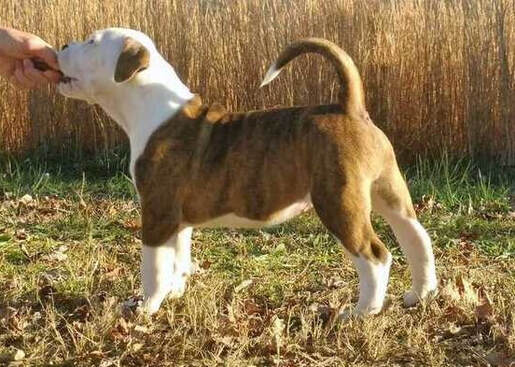

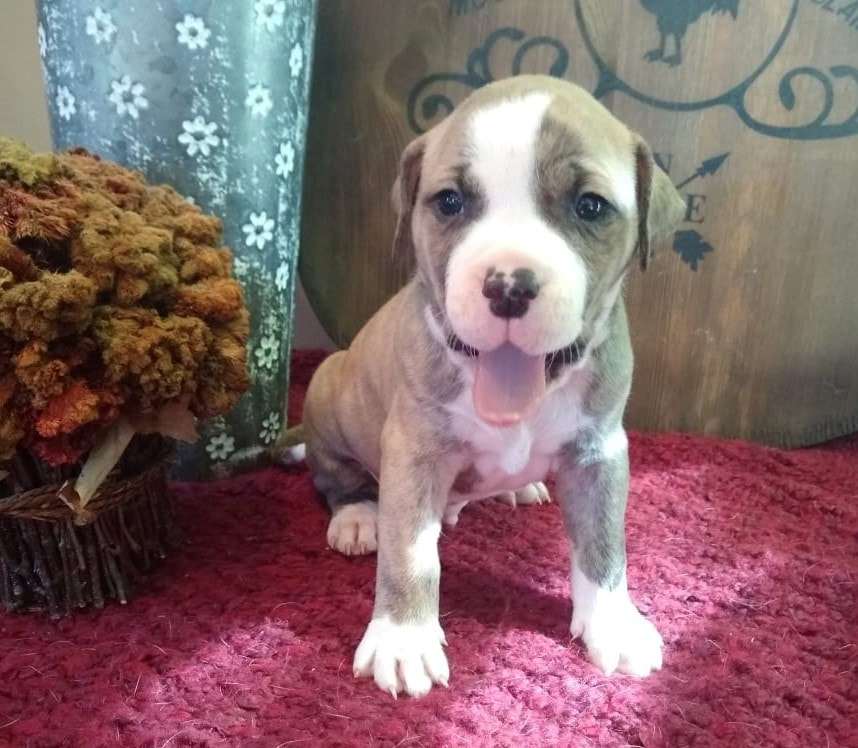
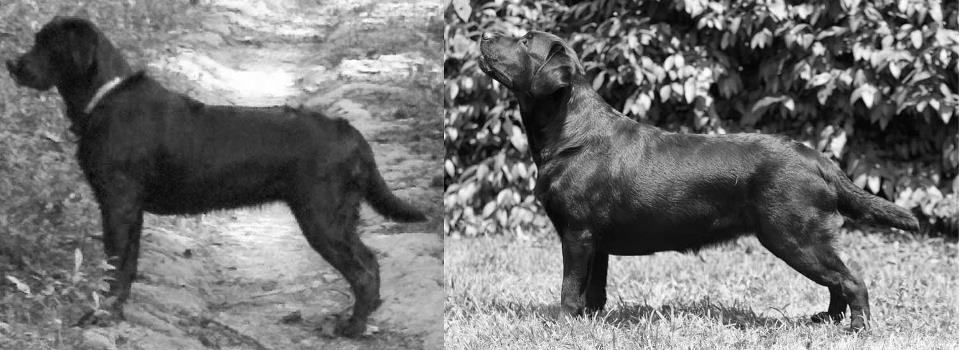
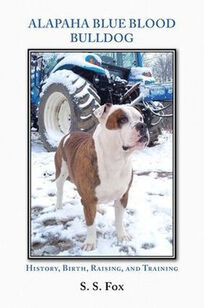
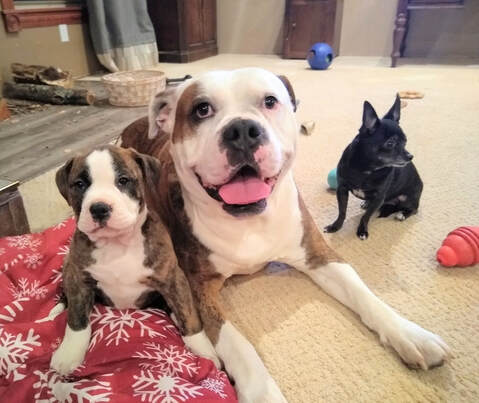
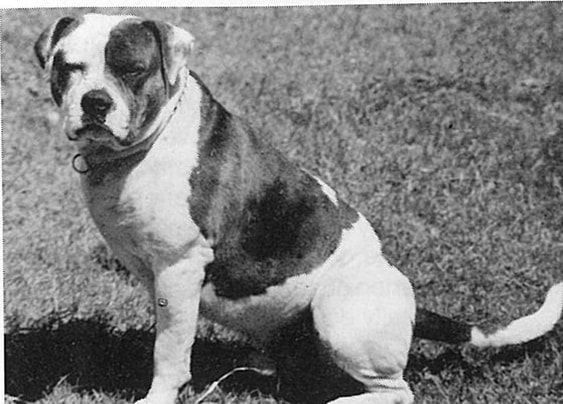
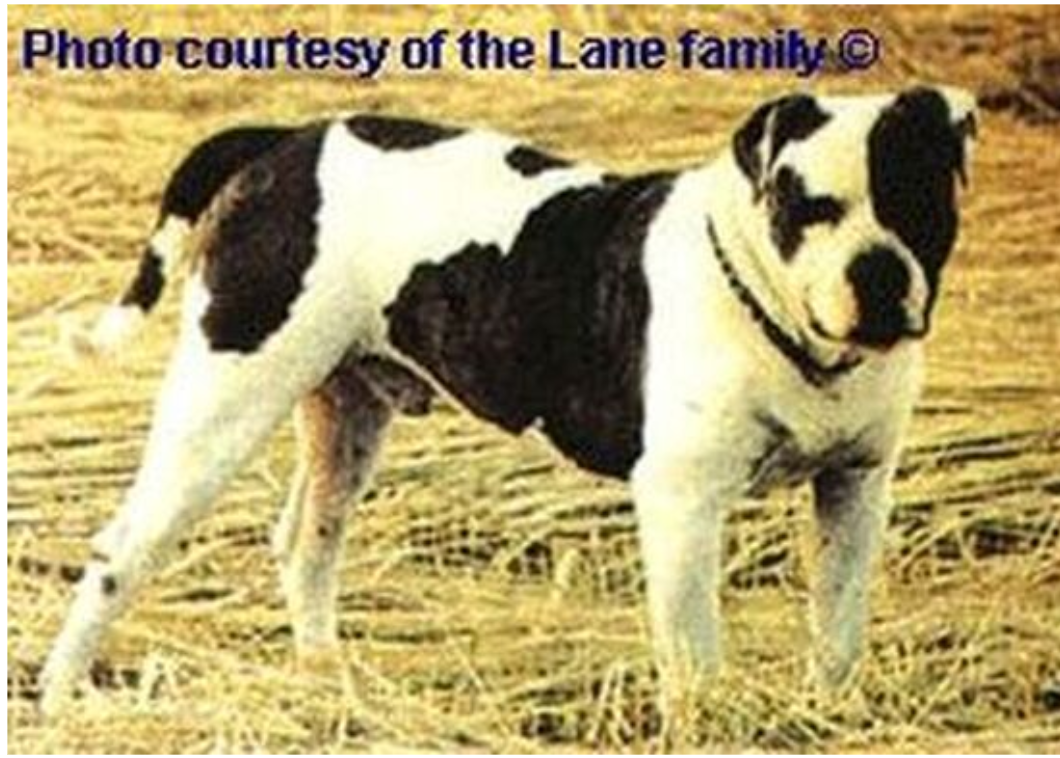

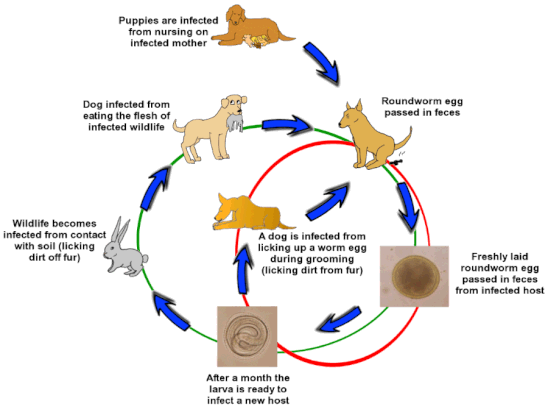
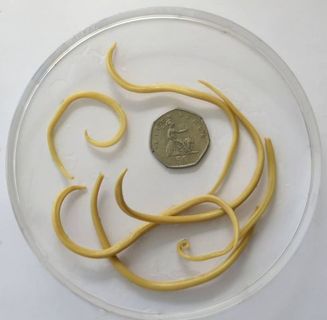
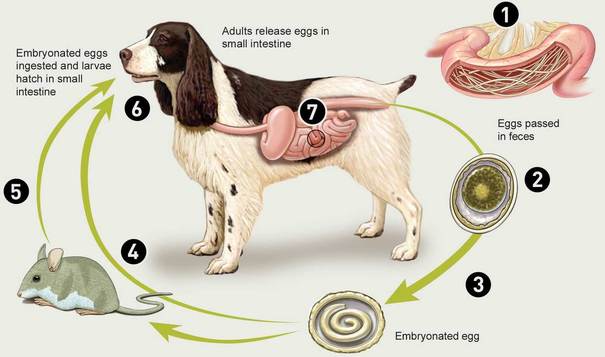
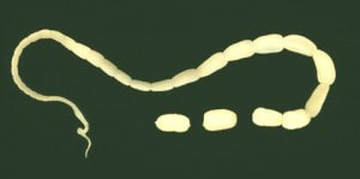
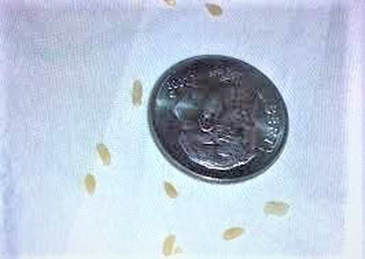
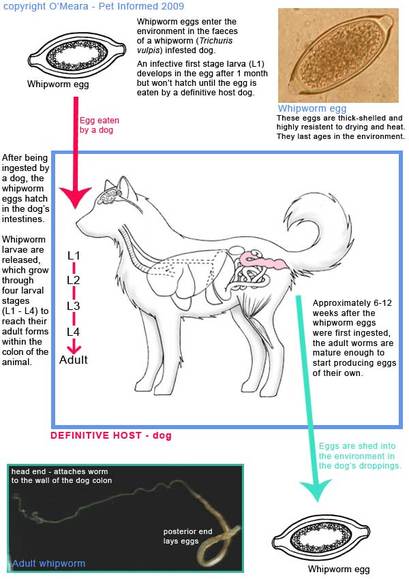
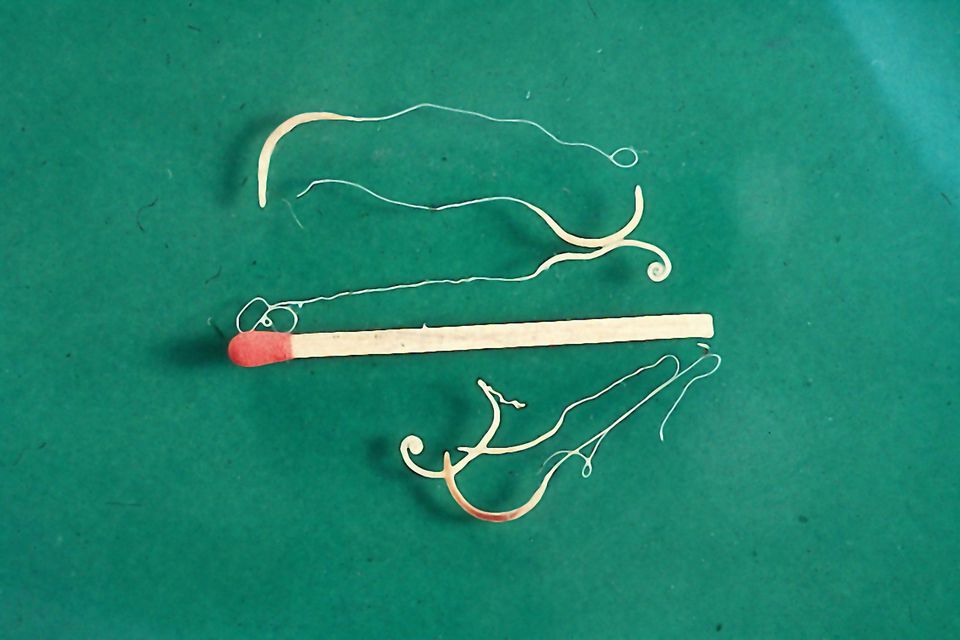
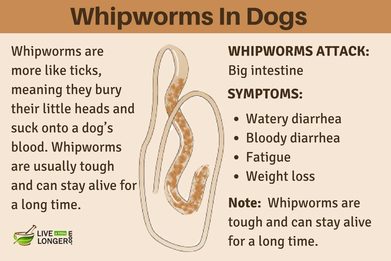
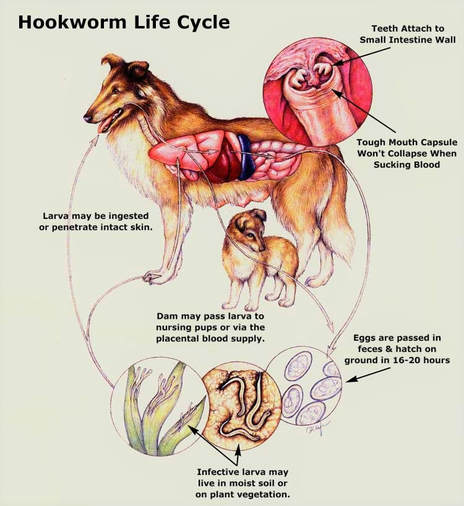
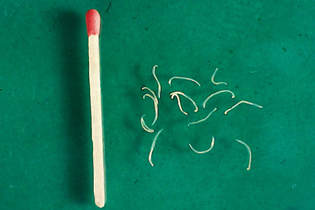
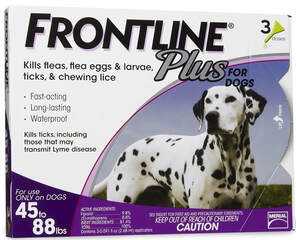
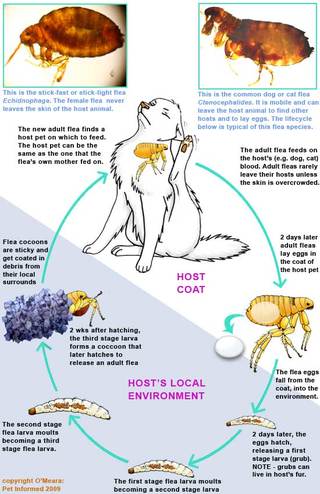
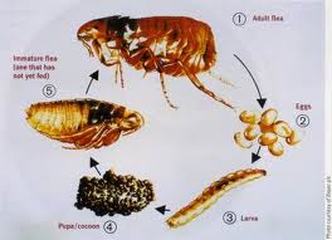
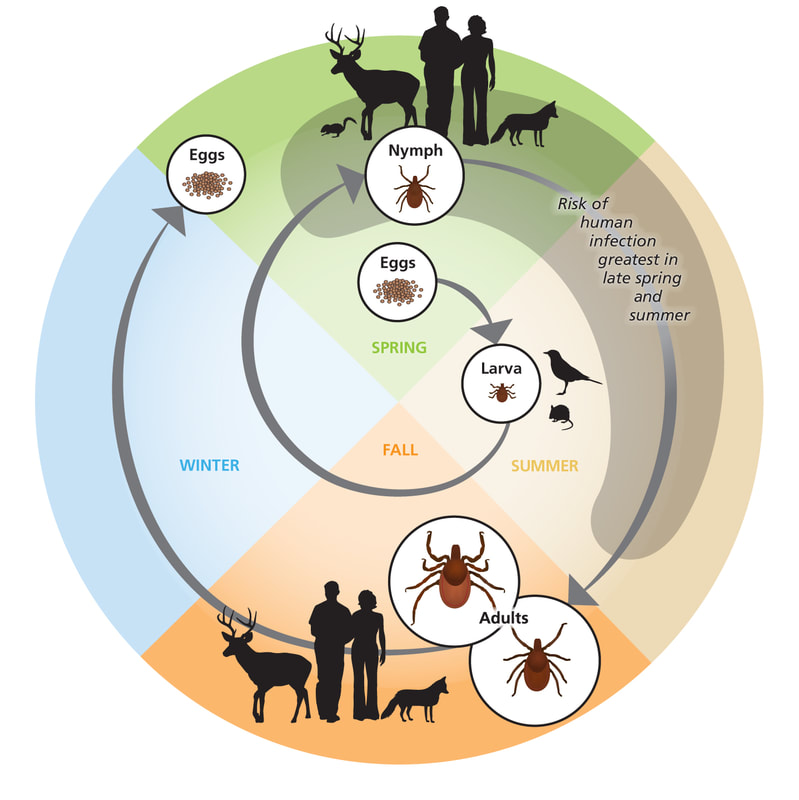
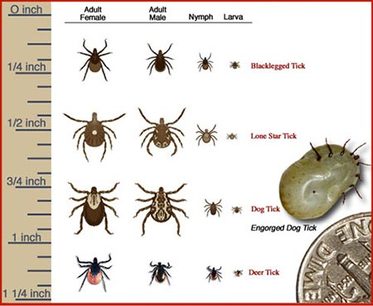
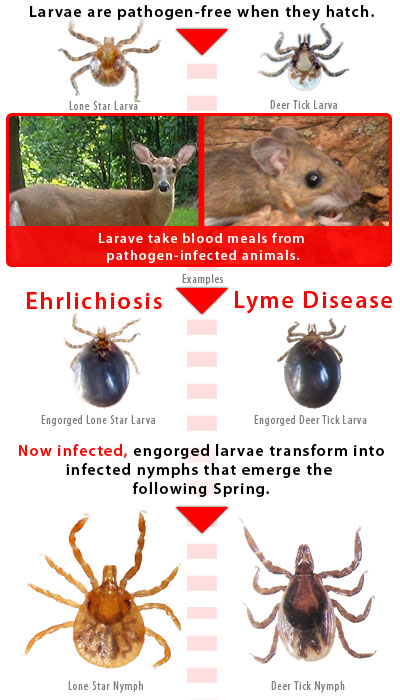
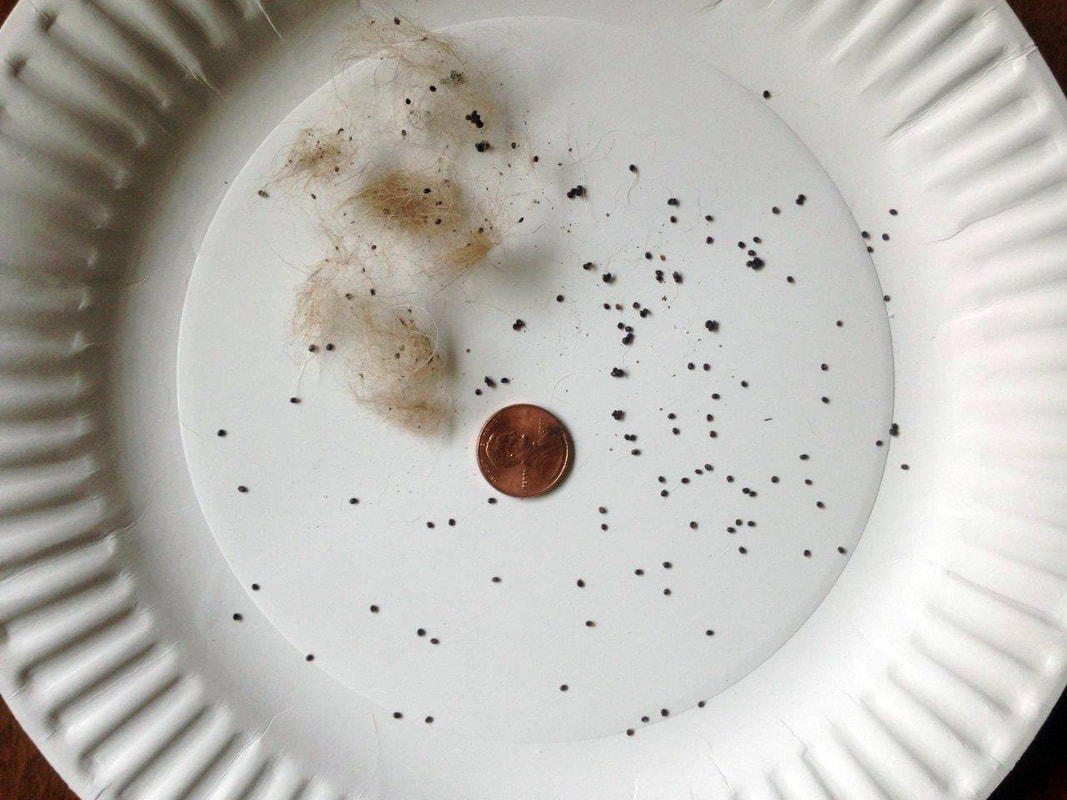

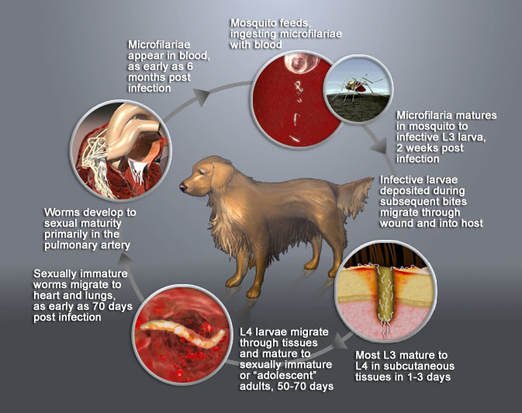
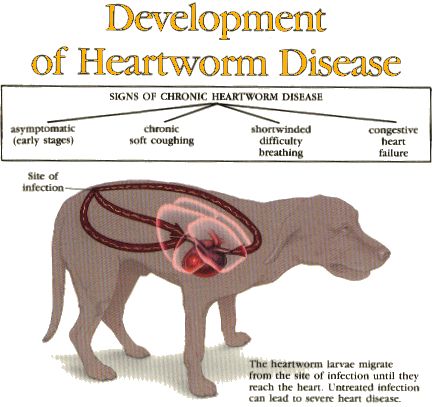
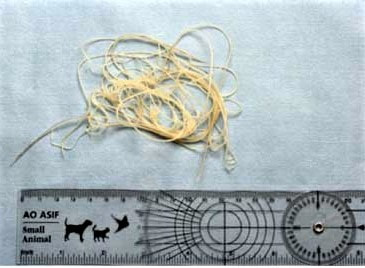
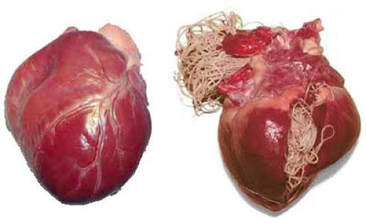
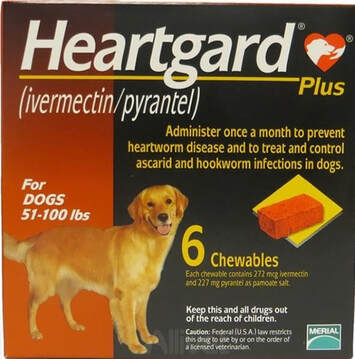
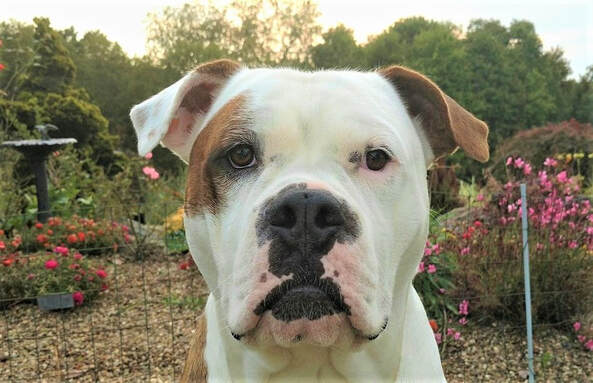
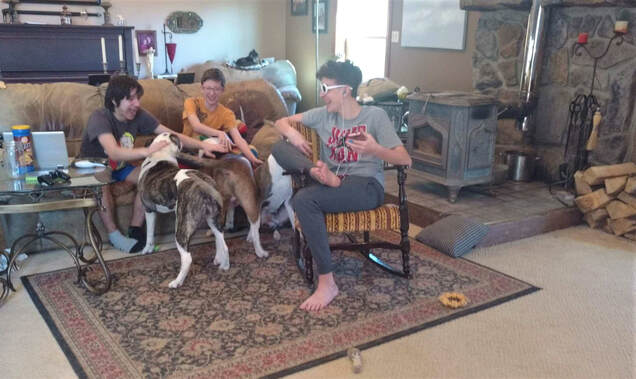
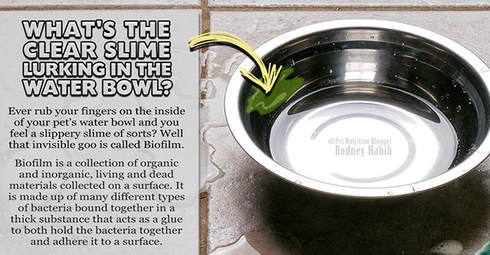
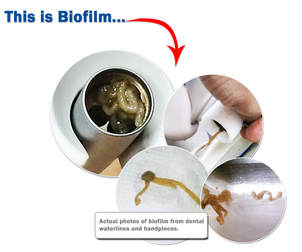

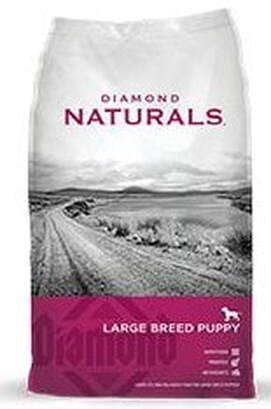

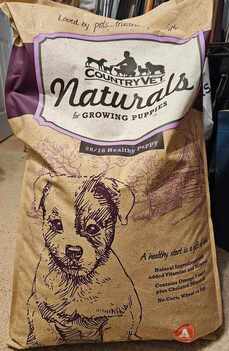


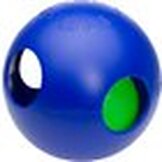
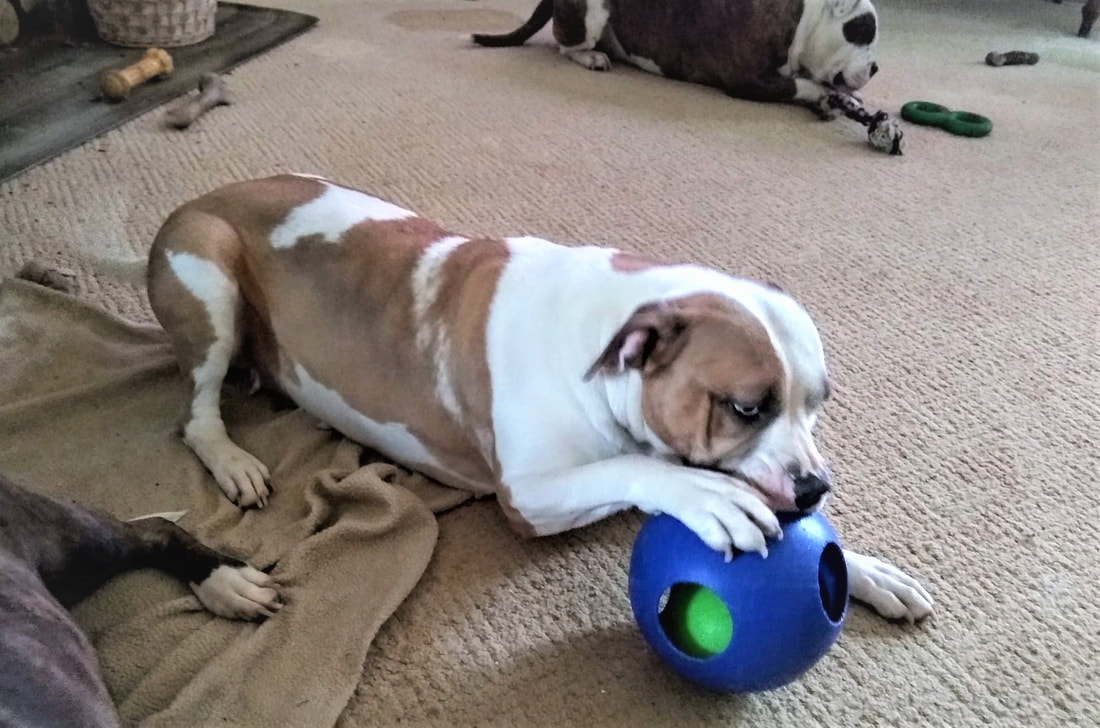
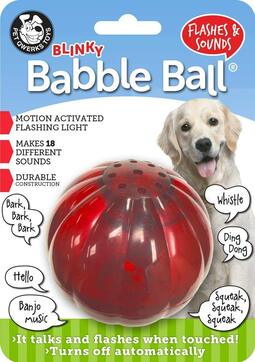

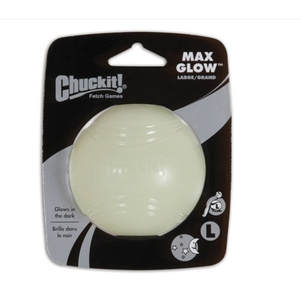
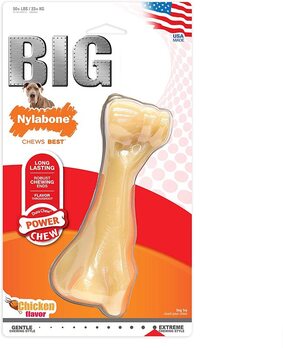
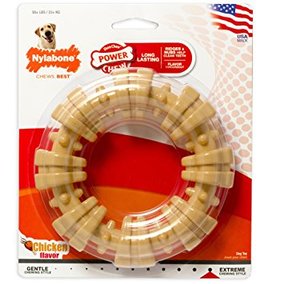
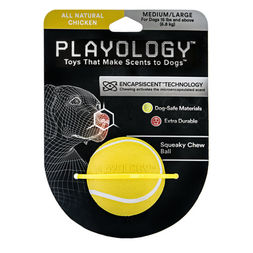
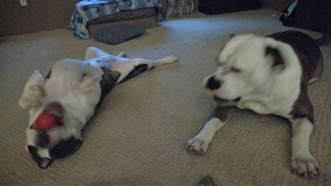
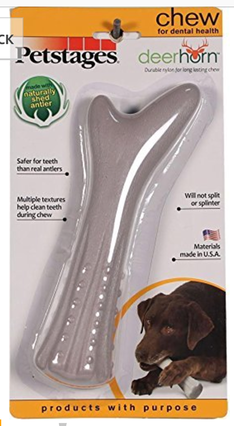
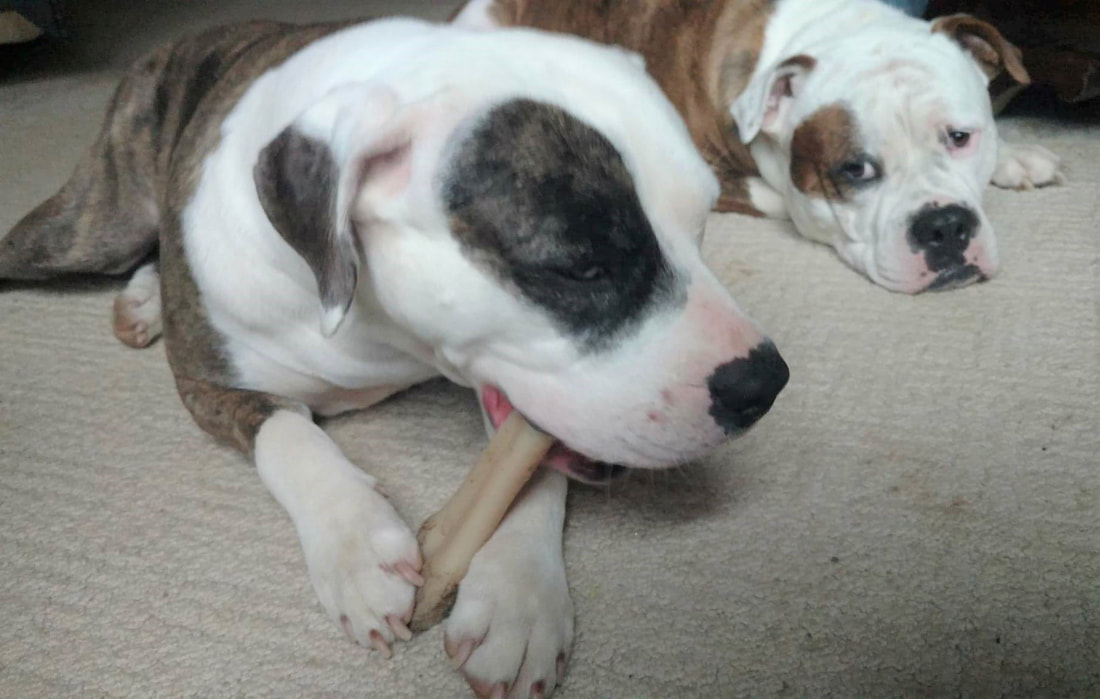
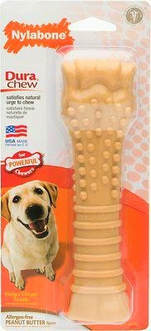
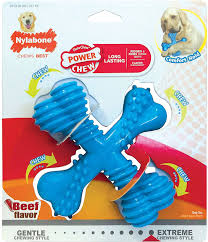

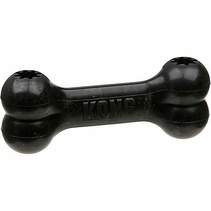
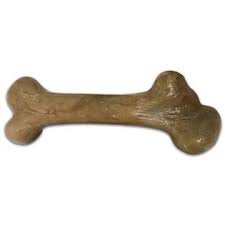
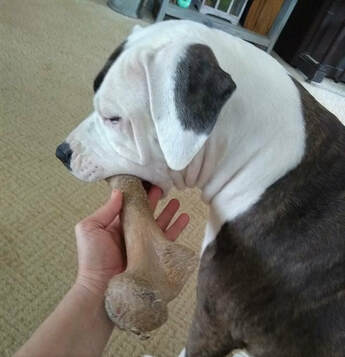
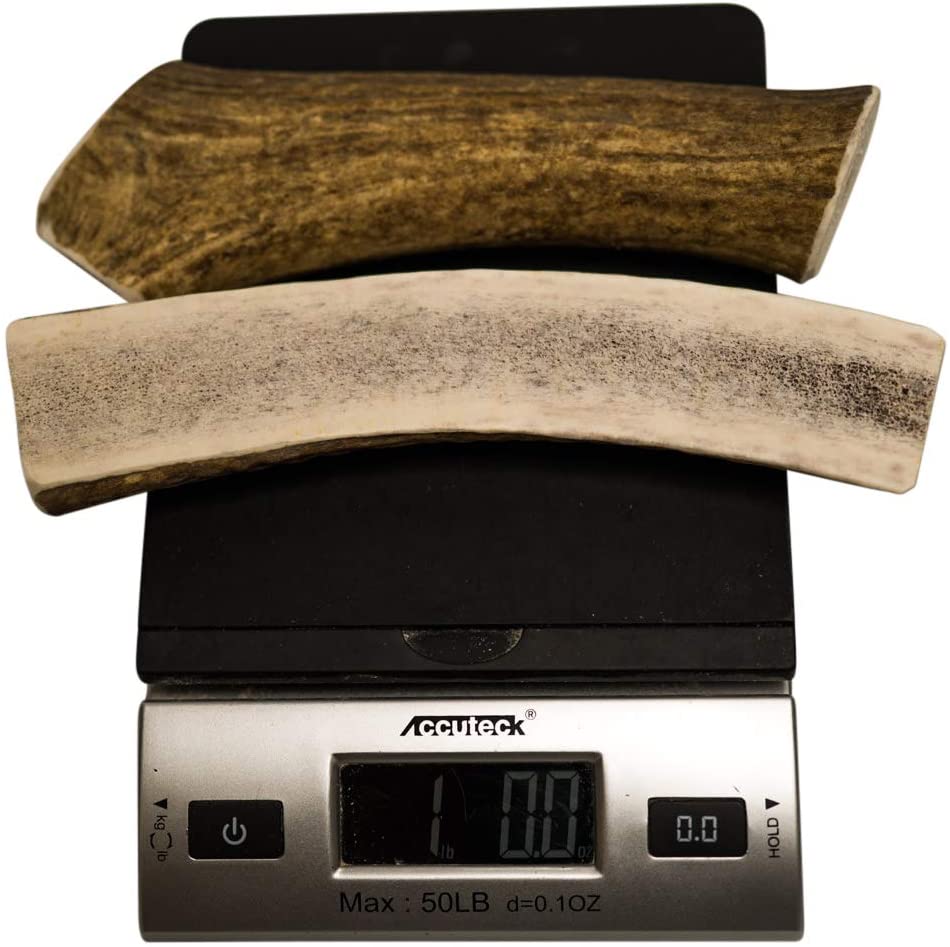


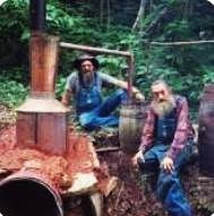
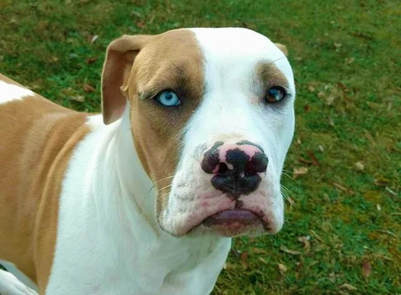
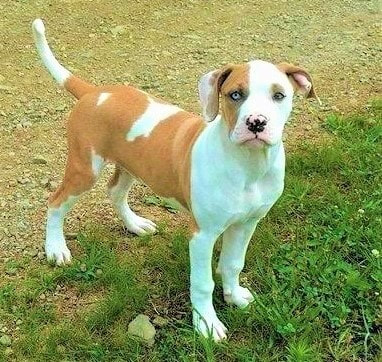
 RSS Feed
RSS Feed